Wild Wyoming, Part 1: Buffalo, Cody & Alpine

We’re in love with Wyoming. 🤠
We spent about a month in the state from mid-July to mid-August, not nearly enough time to explore all of it or get to know it on a deeper level, but enough to see that it’s special, beautiful, and wild — and that we’re definitely going back soon.
I’ve been intrigued by Wyoming ever since I was little. The state with the least amount of people in it seemed to epitomize the Wild West: jagged mountains, open plains, horses, cowboys. Then of course, there’s Yellowstone and Grand Teton, two all-stars in the national parks lineup. So finally crossing into the state on July 21, the first time there for both of us, was really exciting.
We covered our weekend at Devils Tower in our last blog on the Black Hills. The rest of our Wyoming adventures will probably be a three-parter, with this one covering our first week crossing the state. I’ll get right to it!
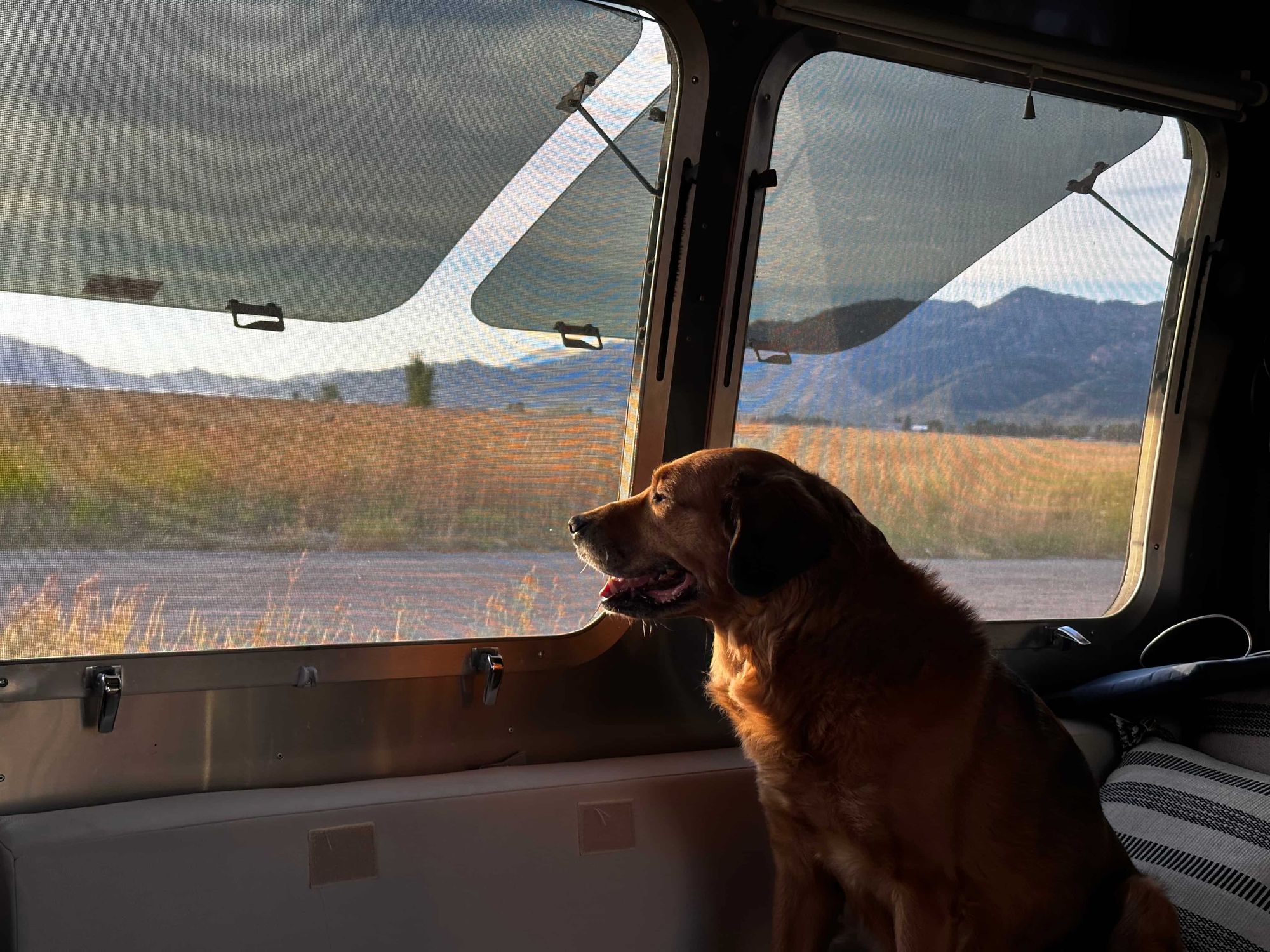
Bighorn National Forest (Buffalo, WY)
Our ultimate destination after leaving Devils Tower was Grand Teton National Park, followed by Yellowstone. But Devils Tower is on the very east side of Wyoming, and Grand Teton is as far west as you can go, so we had a big state to cross first. We divided it up over a week, our first drive taking us a few hours west on Sunday, July 23 to Bighorn National Forest — a big patch of mountains and forests in the otherwise open grasslands / almost desert-y feel of most of middle Wyoming.
Bighorn surprised us. It was absolutely beautiful, and an area that most people probably just drive through (like us) on their way to the national parks. But we want to go back and spend much longer there next time.
A lot of it had to do with our campground — I think it was our first time in a national forest campground, which are now some of our favorites to go to. There usually aren’t any hookups (some have electric) but there are basic nice-to-haves like water spigots, picnic tables, fire rings, bathrooms, dumpsters, bear boxes, sometimes a dump station. And they’re cheap, usually between $10-20 per night. AND the sites are typically more spread out and private than normal campgrounds, in the beautiful setting of the national forest.
Anyway, we stayed at Middle Fork Campground in the national forest, 20 minutes away from the town of Buffalo, for two nights. It was basically perfect. The campground only had nine sites and ours was the best one: separated from the others (we could barely see one other site from ours), cozy, surrounded by towering pines, backing up to a rocky hillside, a picturesque creek cascading right next to us. We loved it immediately and wished we were staying longer than two nights.
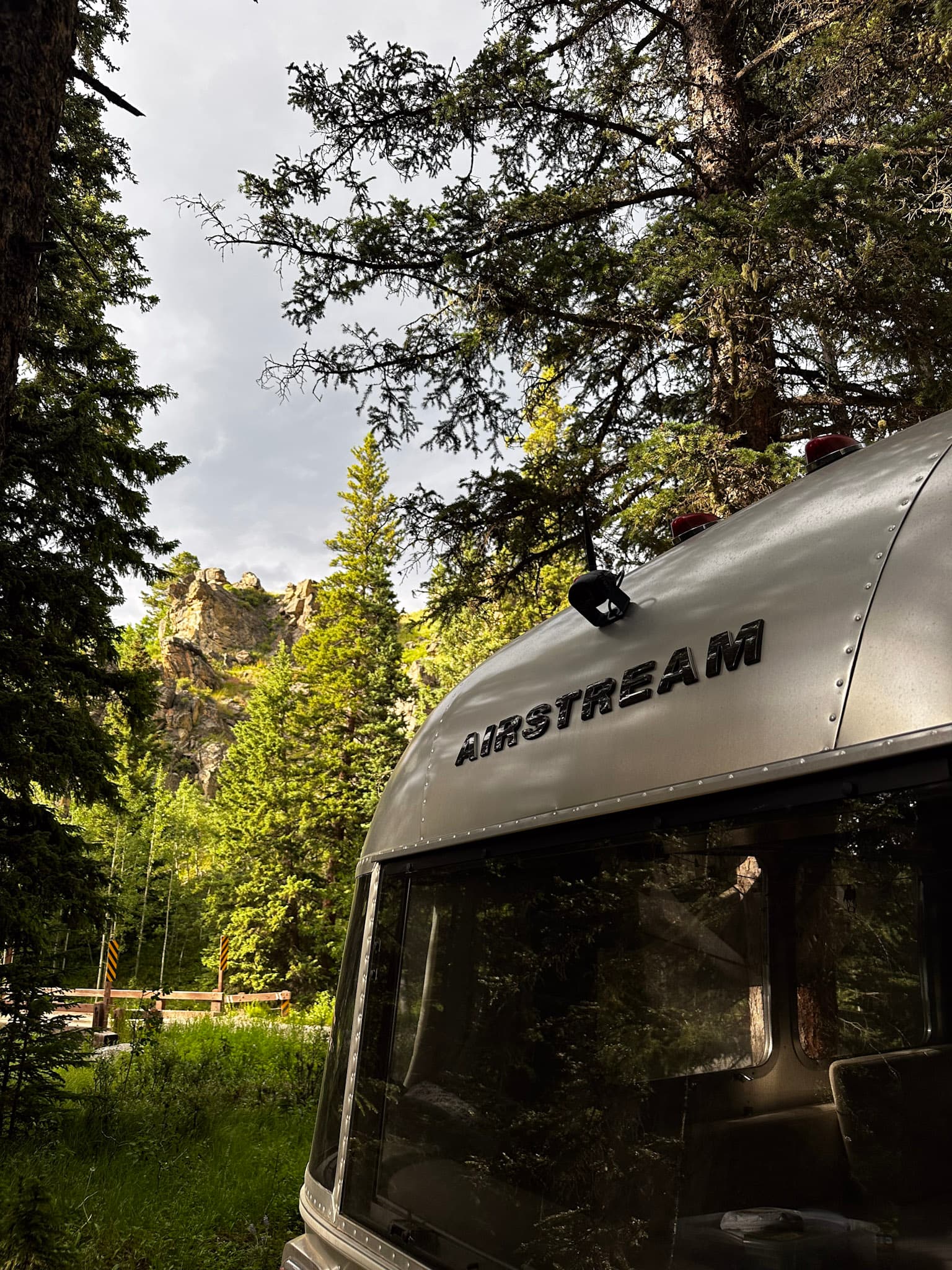
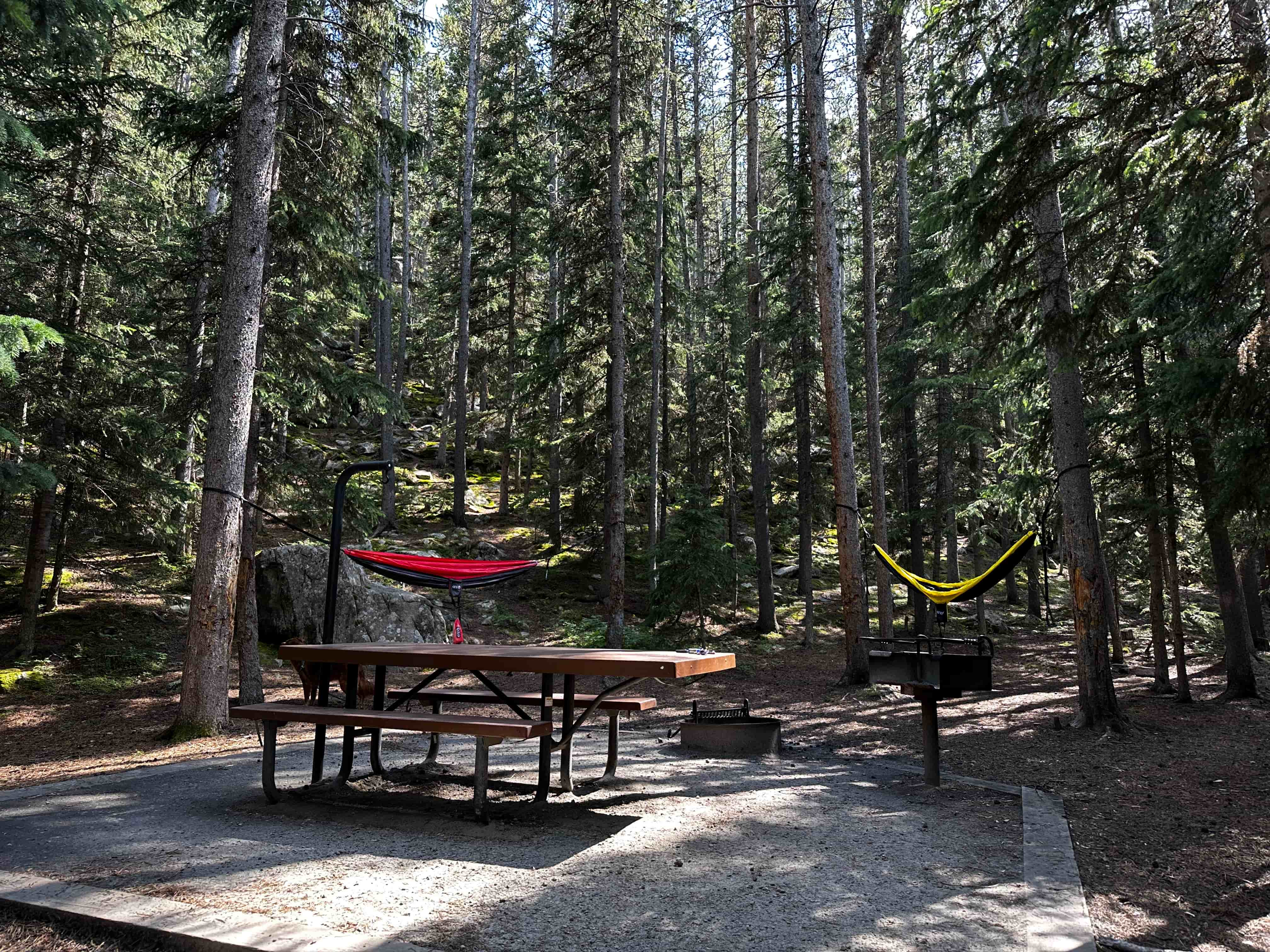

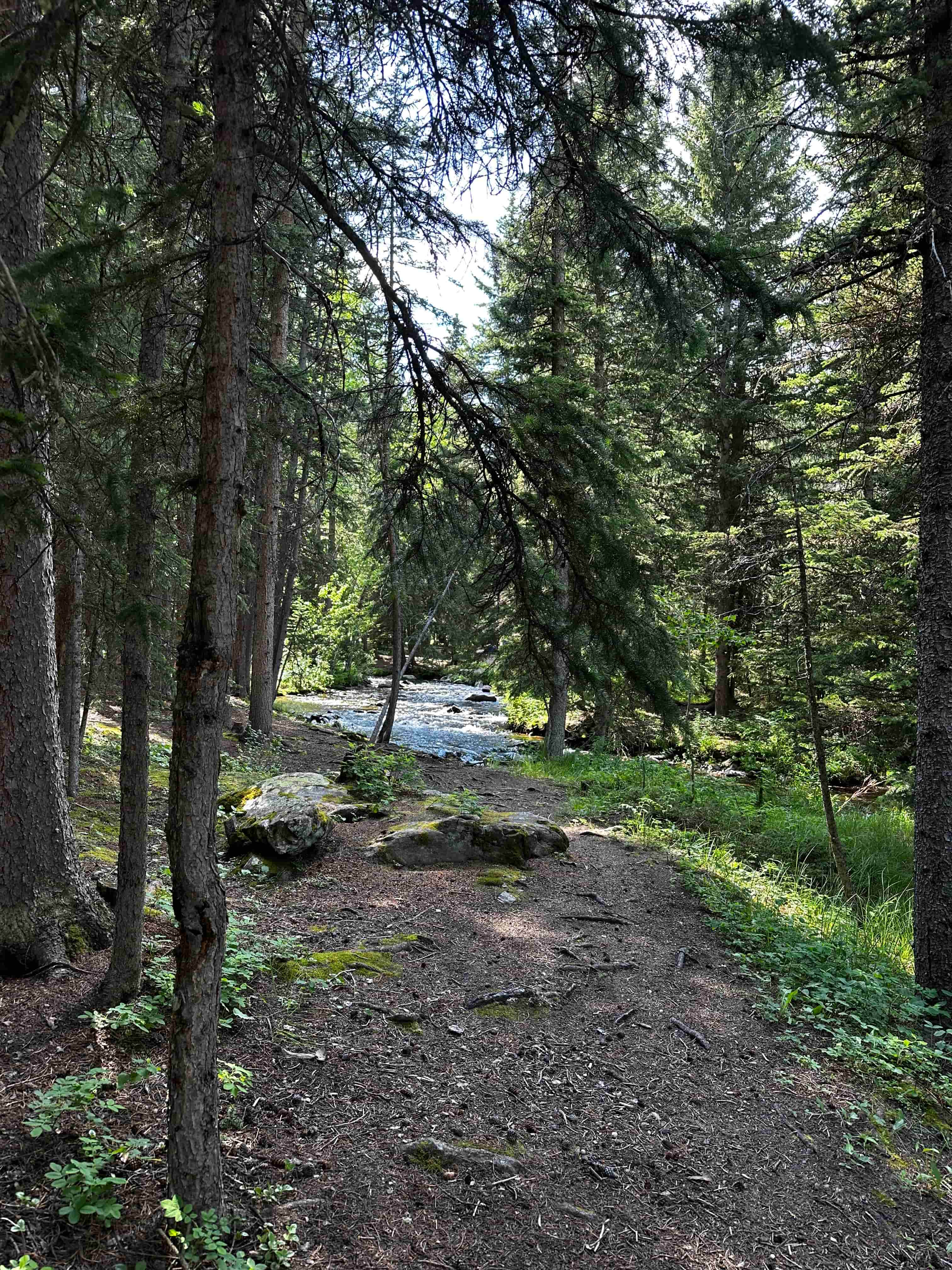
There was no cell service at all from the campground, so we had to drive into town to work. Buffalo is a small-ish but busy town; we worked from a picnic table at a public park off our phone hotspots. It was nice but a little chaotic; there was a daycare or preschool right across the street, so every couple hours all the little kids would come out to play at the park, screaming in the background of our Zoom meetings. Or people would bring their dogs to play, and Hollie (who we brought with us) would go crazy.
It was really peaceful having no service at the campground though. We tied Hollie to a tree on her long leash, played board games at the picnic table, and hammocked in the trees, reading. One night we had a campfire and looked at the stars peeking through above the pines. It felt more like actual camping.
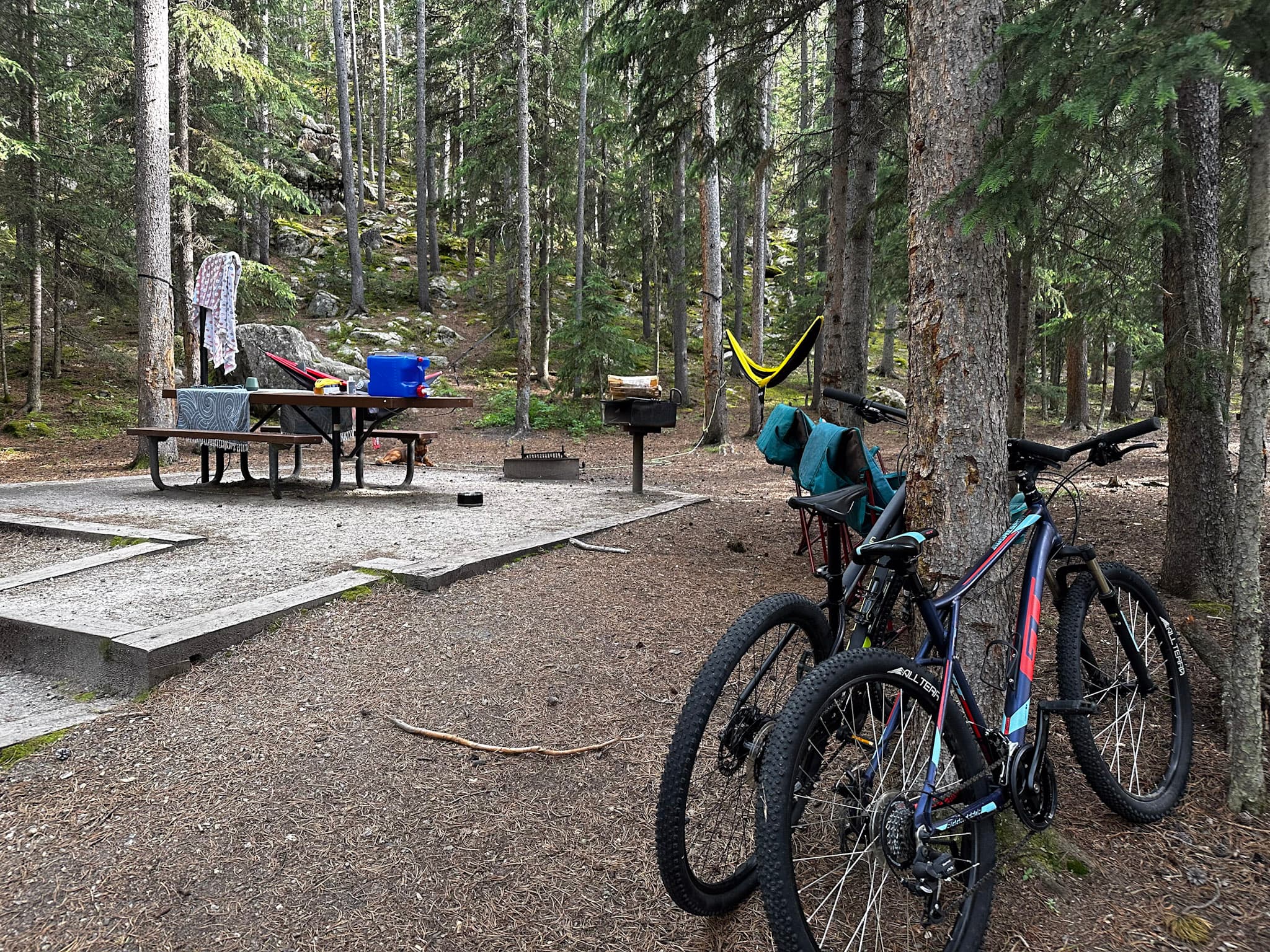
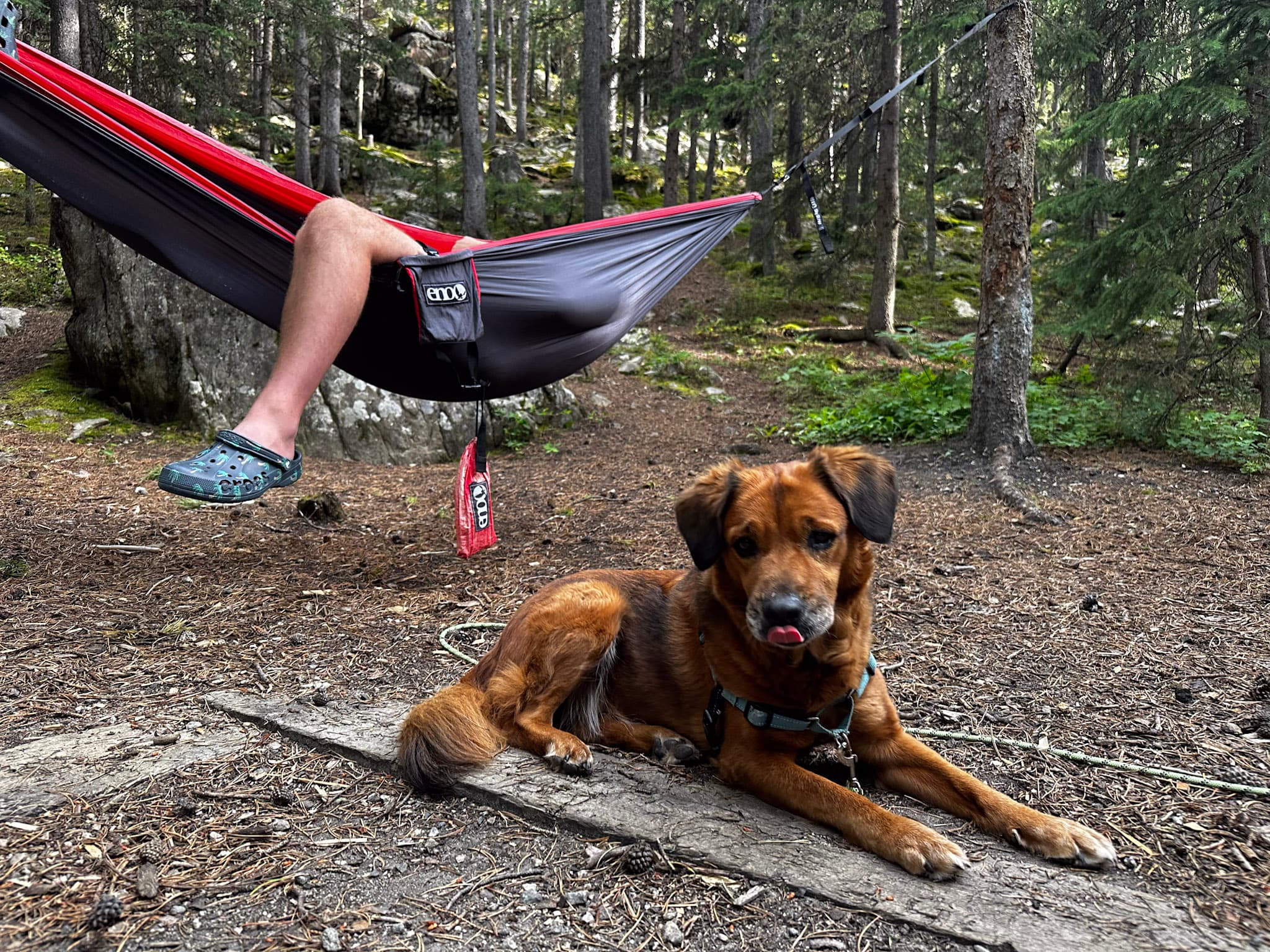
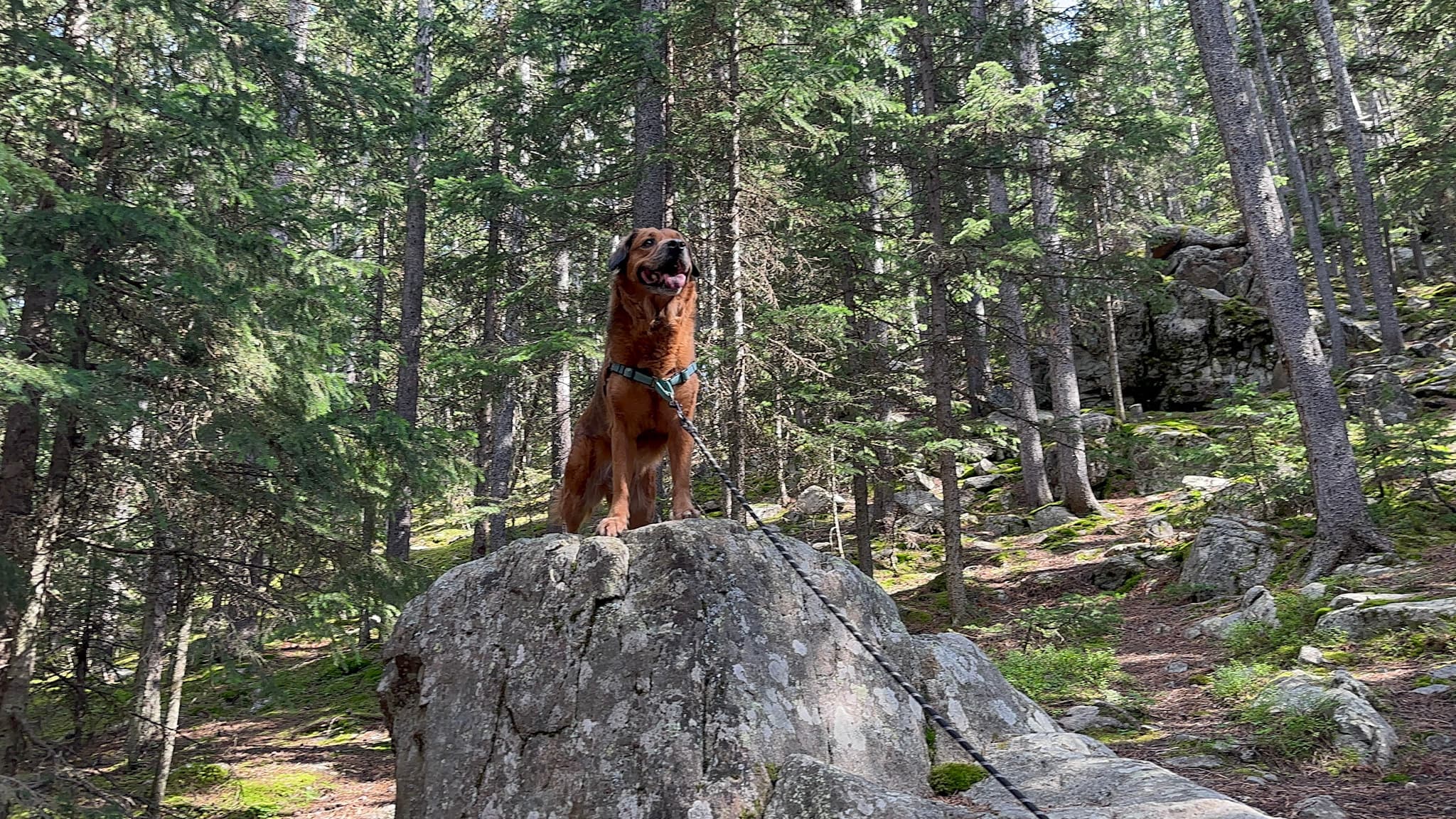
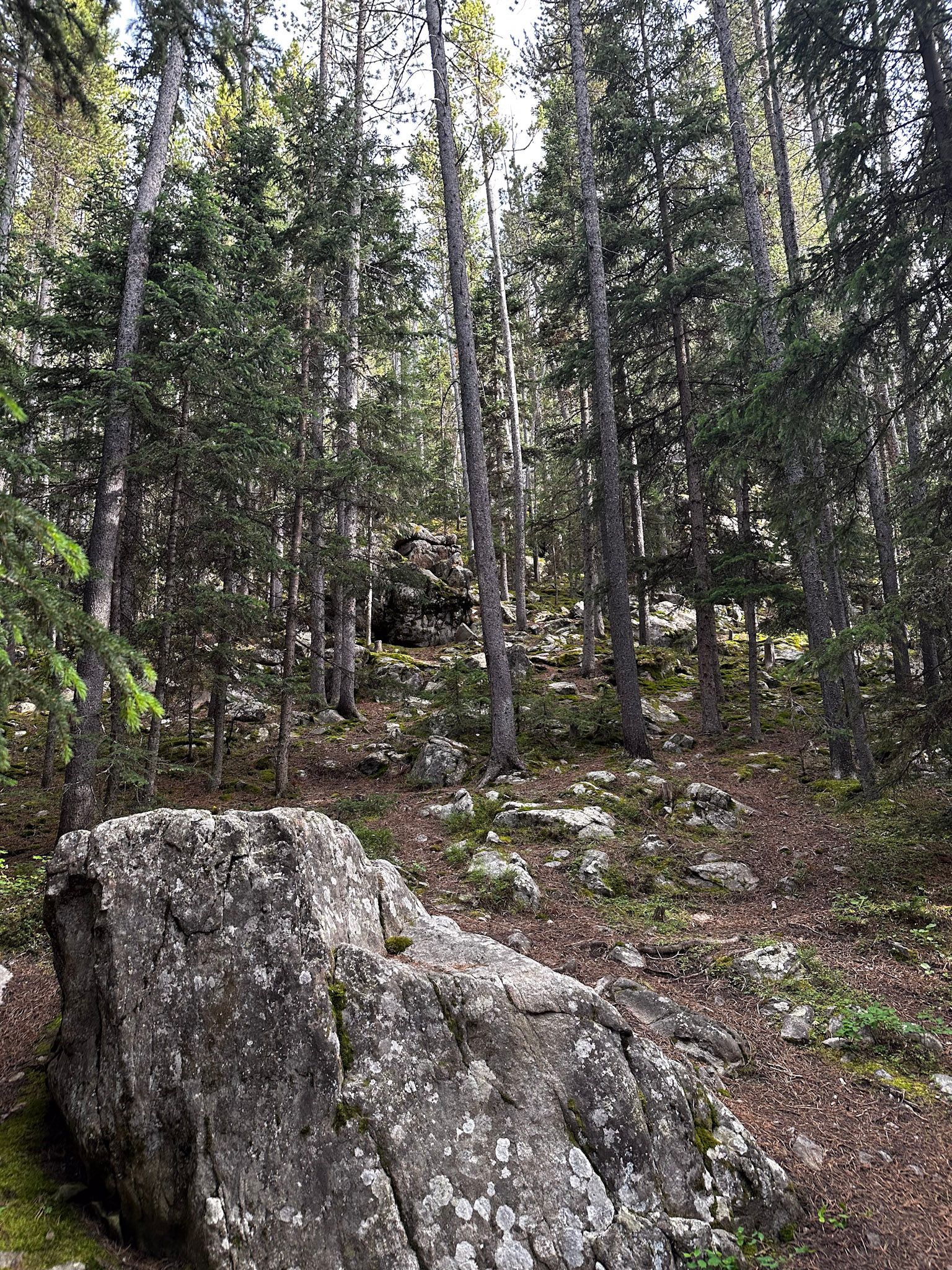
We didn’t do much else during our short time there, but already want to go back… probably to the same campground, same site. Bighorn National Forest includes the Cloud Peak Wilderness — Cloud Peak is just over 13,000 feet tall, so we were in our first “real” western mountains since leaving home. South Dakota felt like we were out west, but Wyoming is when we REALLY started to feel like it.
Tex (our truck) was struggling a little to pull the Airstream through these mountains, but he did fine. We just did what the semi-trucks do, stay in the right lane, go slow. Leaving Middle Fork on Tuesday, we drove the scenic road through the rest of Bighorn, which was absolutely beautiful. Toward the end, the pine-forested mountains gave way to these giant rocky cliffs and canyons that were amazing to drive through. Definitely an underrated part of Wyoming (probably not for people who live around there, but for everyone like us who is unfamiliar with most of the state).
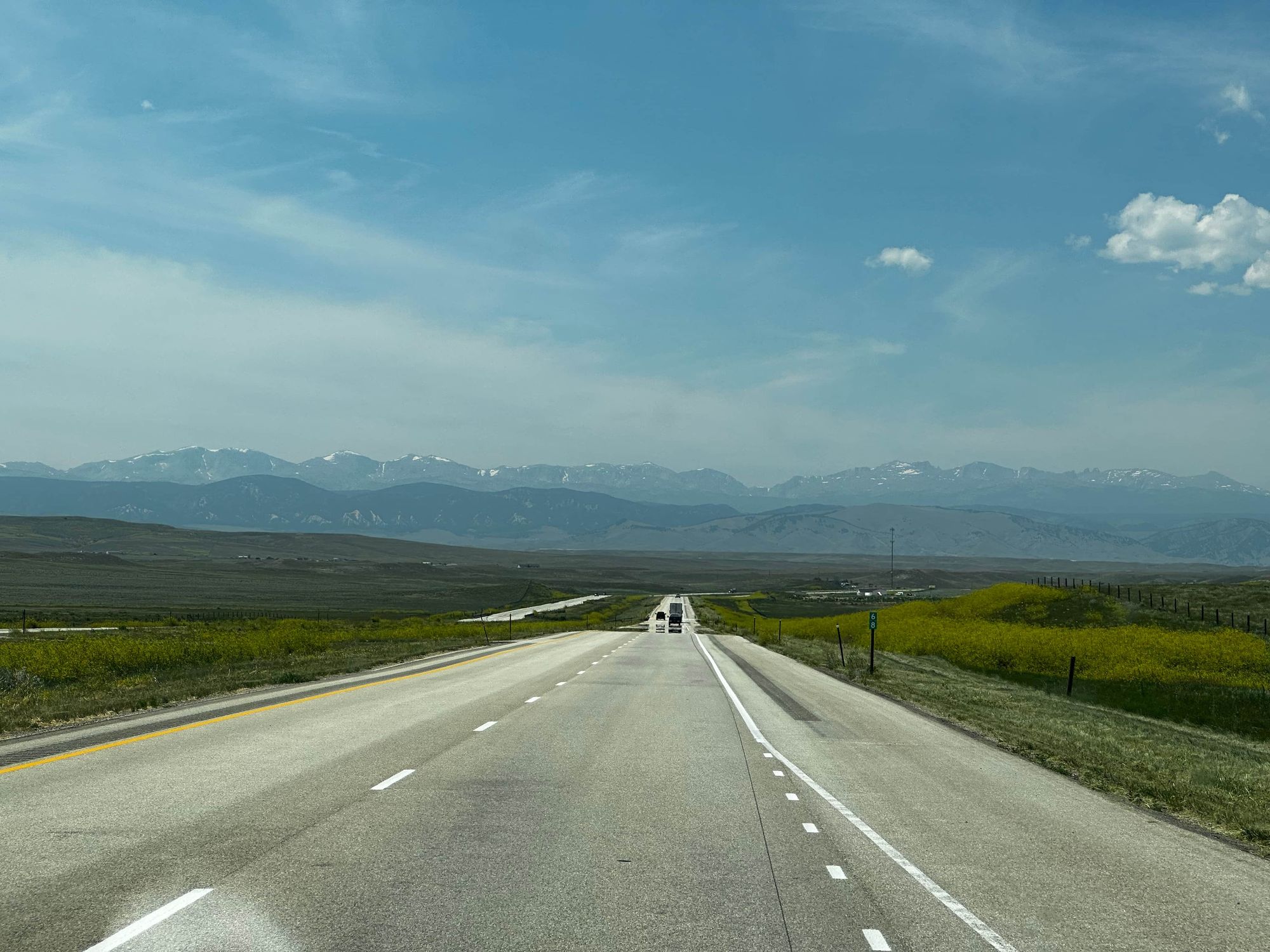
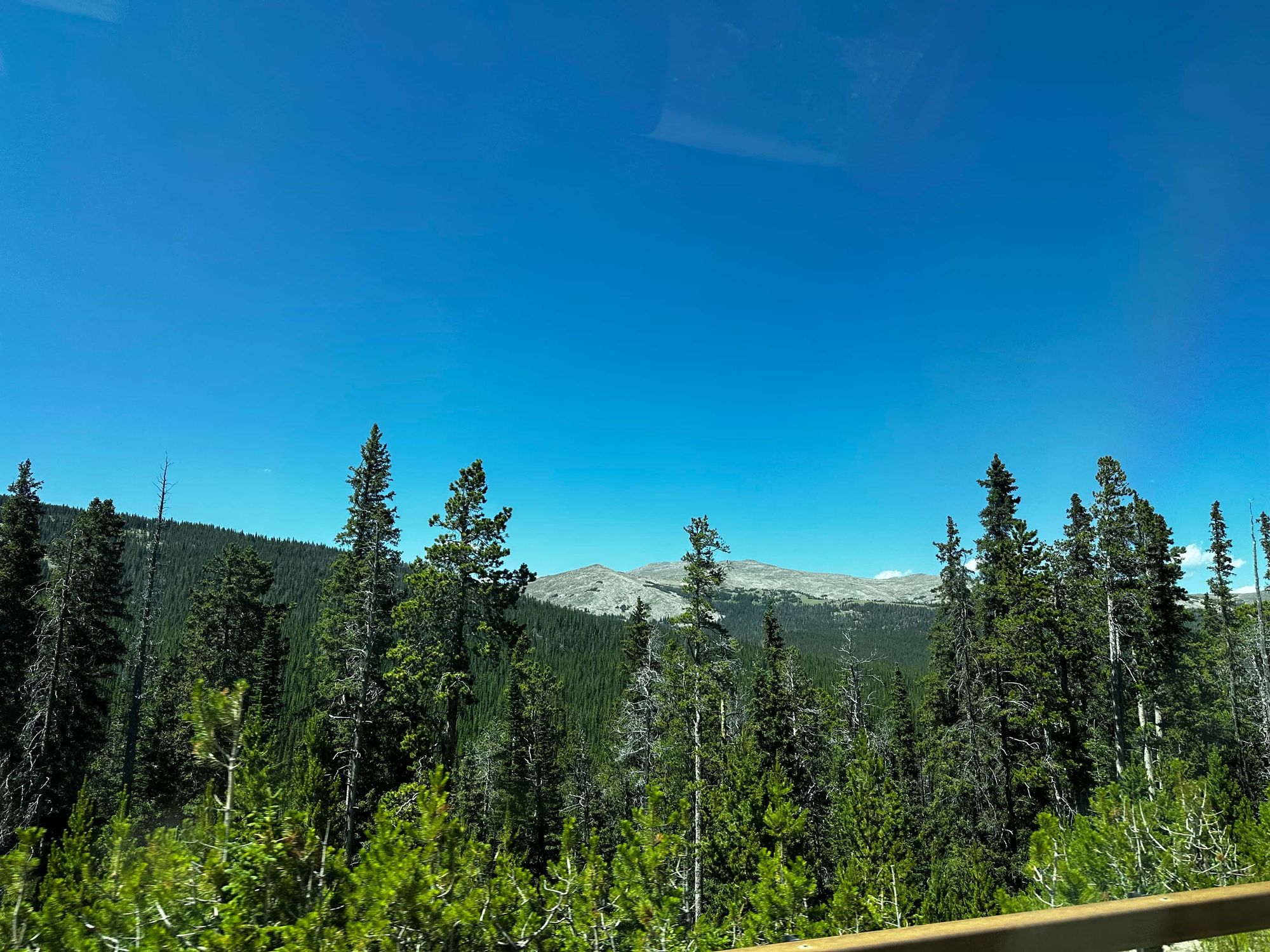
It was time to drive another few hours west. Destination: Cody!
Buffalo Bill State Park (Cody, WY)
Cody is the Rodeo Capital of the World and a gateway town to Yellowstone, so it felt like a great stop before getting to the national parks. Most of the drive from Bighorn to Cody was wide-open, desert-like plains — sometimes with tall golden and green grasses, sometimes with crumbly rock formations that looked like Badlands. Then when we got close to Cody, we started seeing mountains again.
Cody is a small but lively town: touristy, fun, old-west vibes. We drove through downtown toward Buffalo Bill State Park, where we were camping. On the way there, you go through a few tunnels through the mountains, right by the massive Buffalo Bill Dam. The river makes a canyon through the mountains, and once you get past the dam, you come out the other side of the tunnels looking at a huge blue reservoir, with more rocky, desert-y looking mountains in the background.
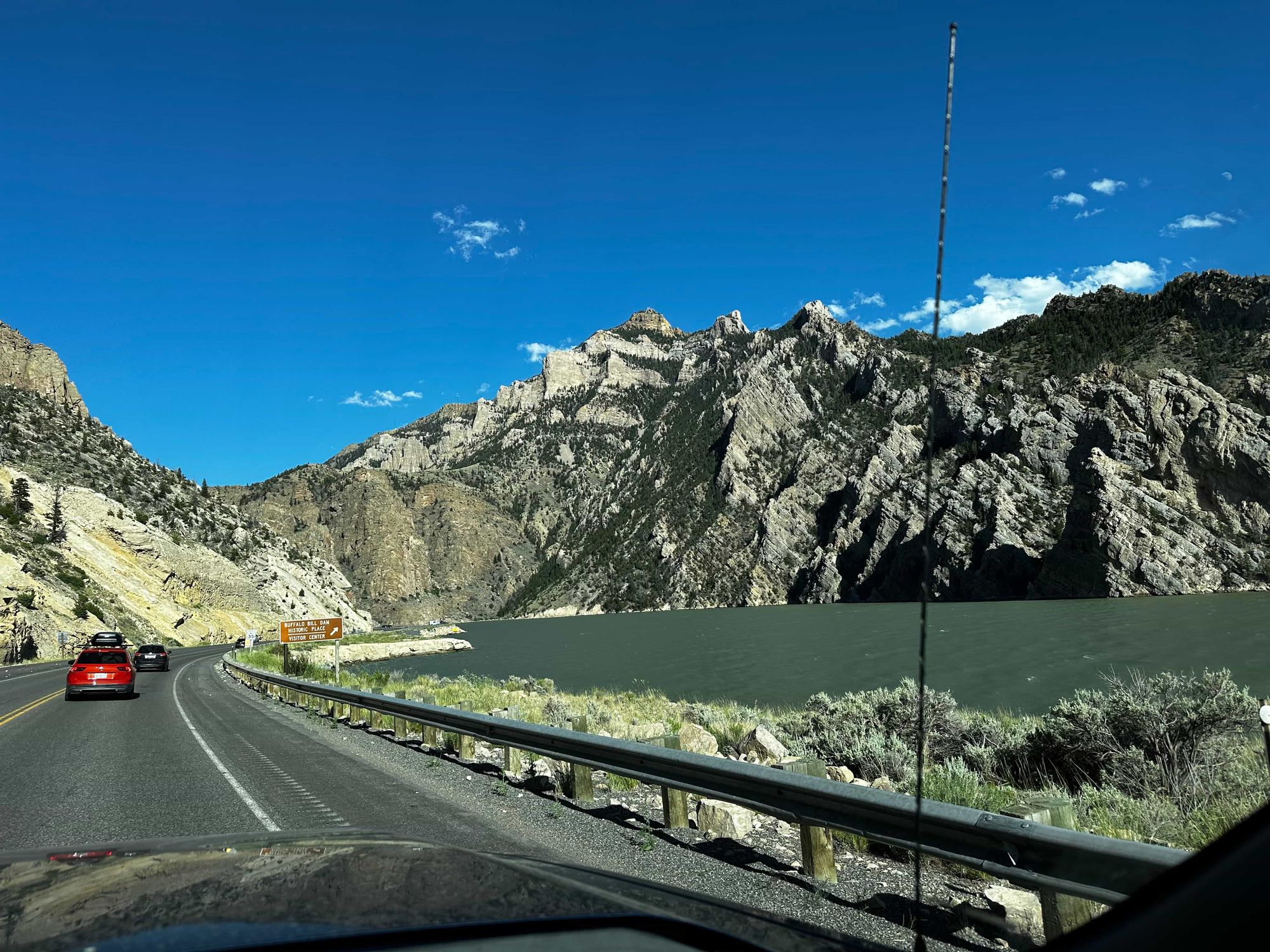
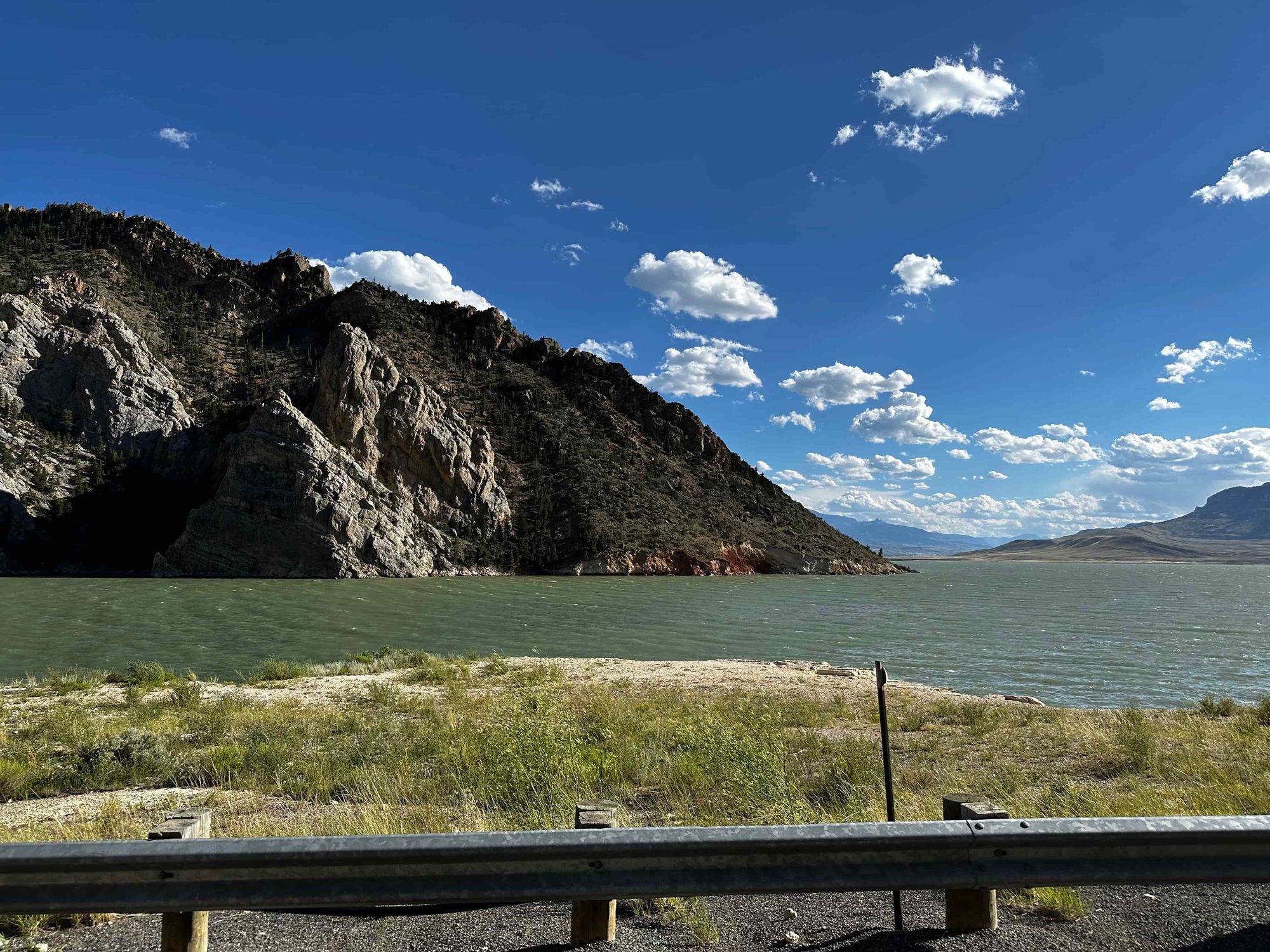
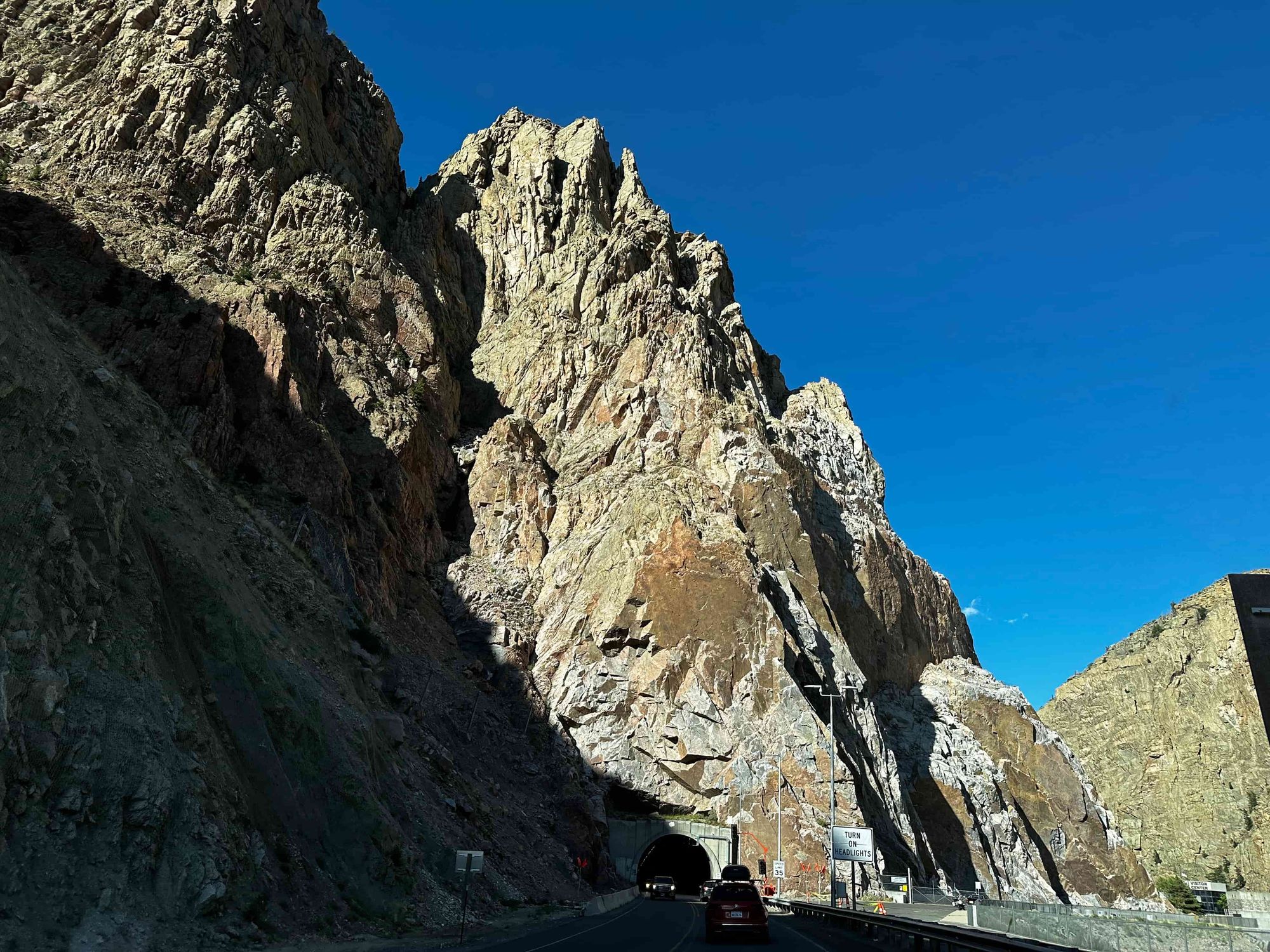
One part of the campground has great mountain views, and the other part is right on the shore of the reservoir. We ended up extending our time in Cody and camping for two nights in each section. I liked both, but the lakeshore one was really nice and quiet, with a beautiful view.
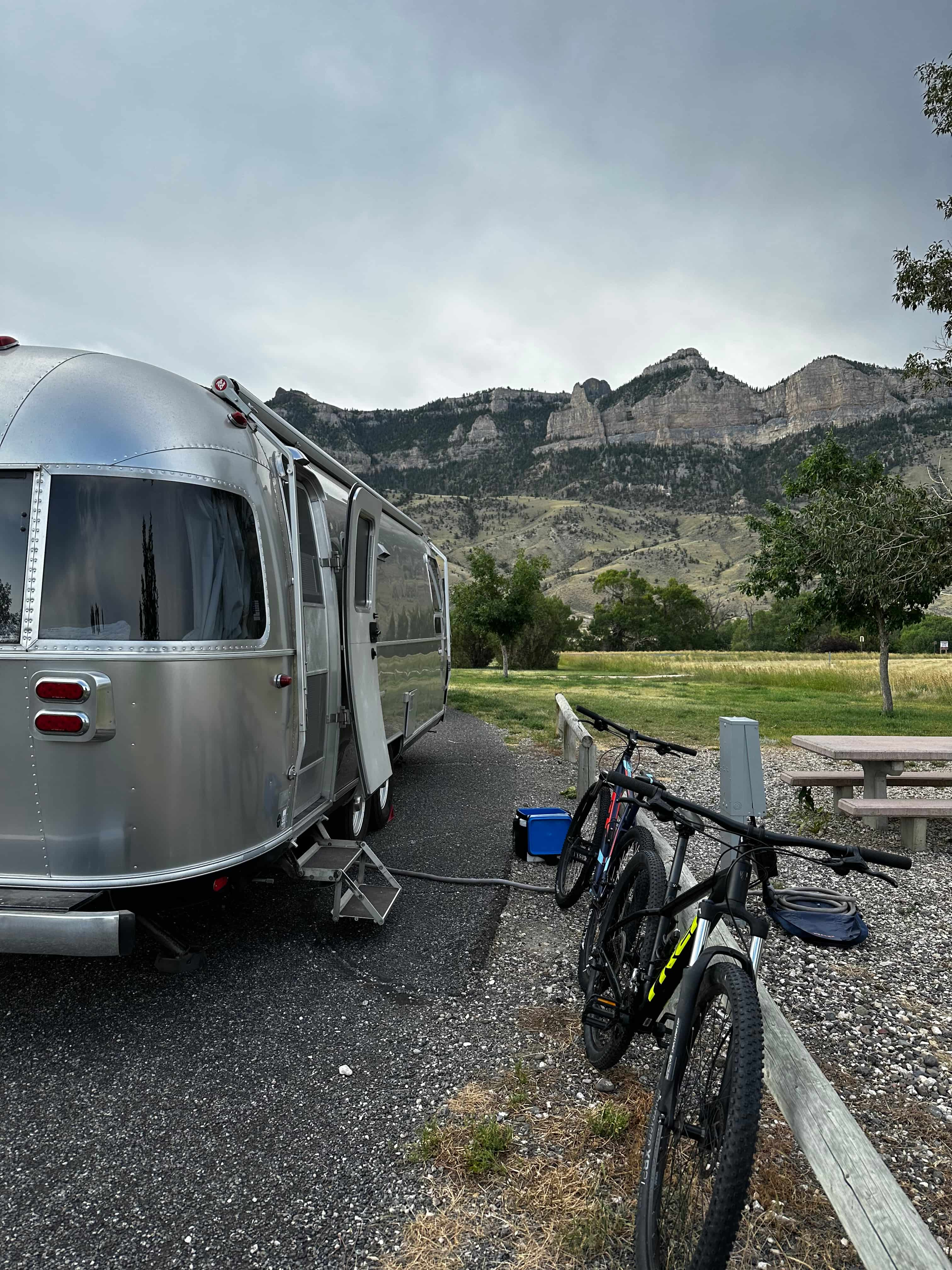
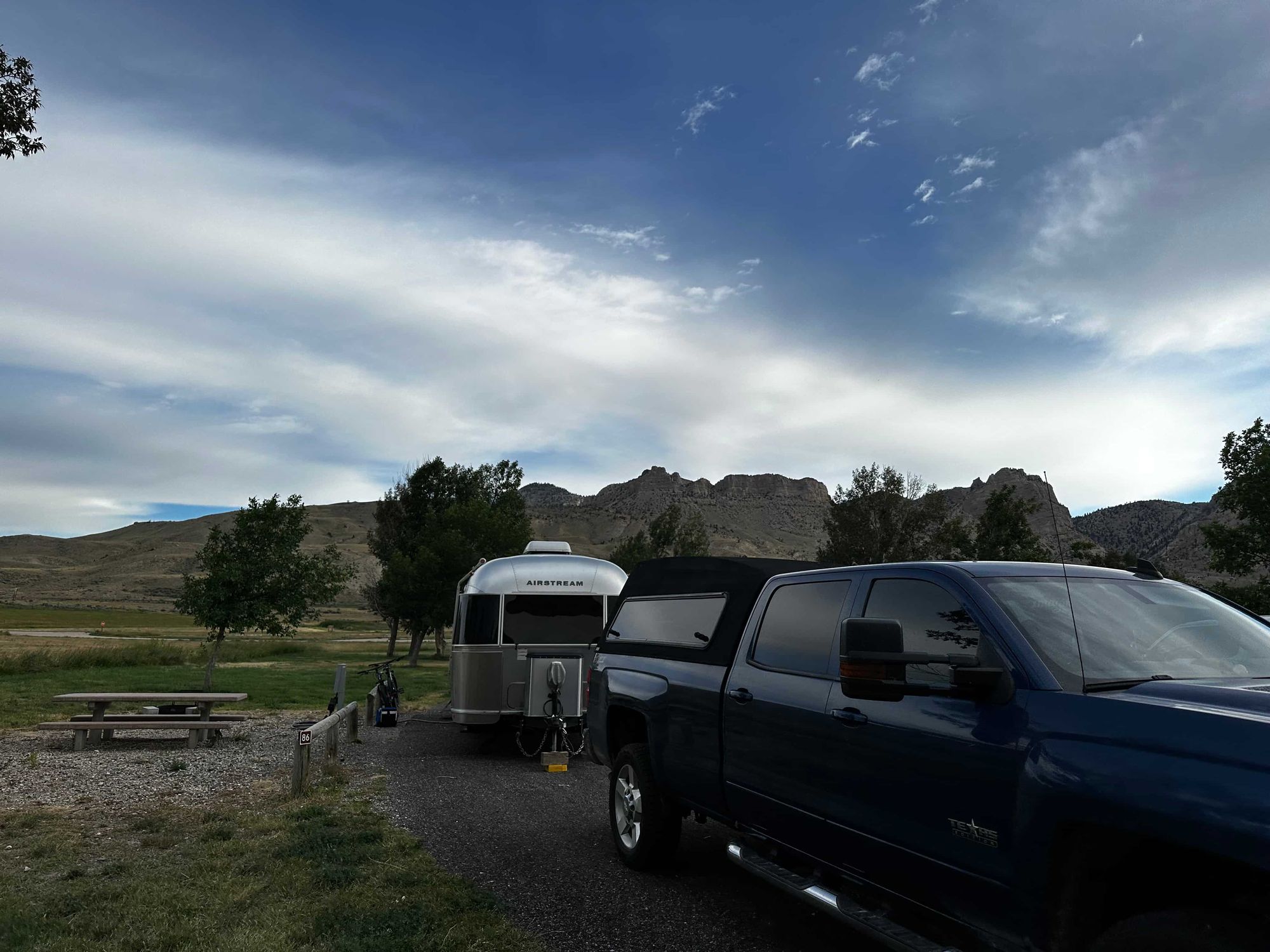
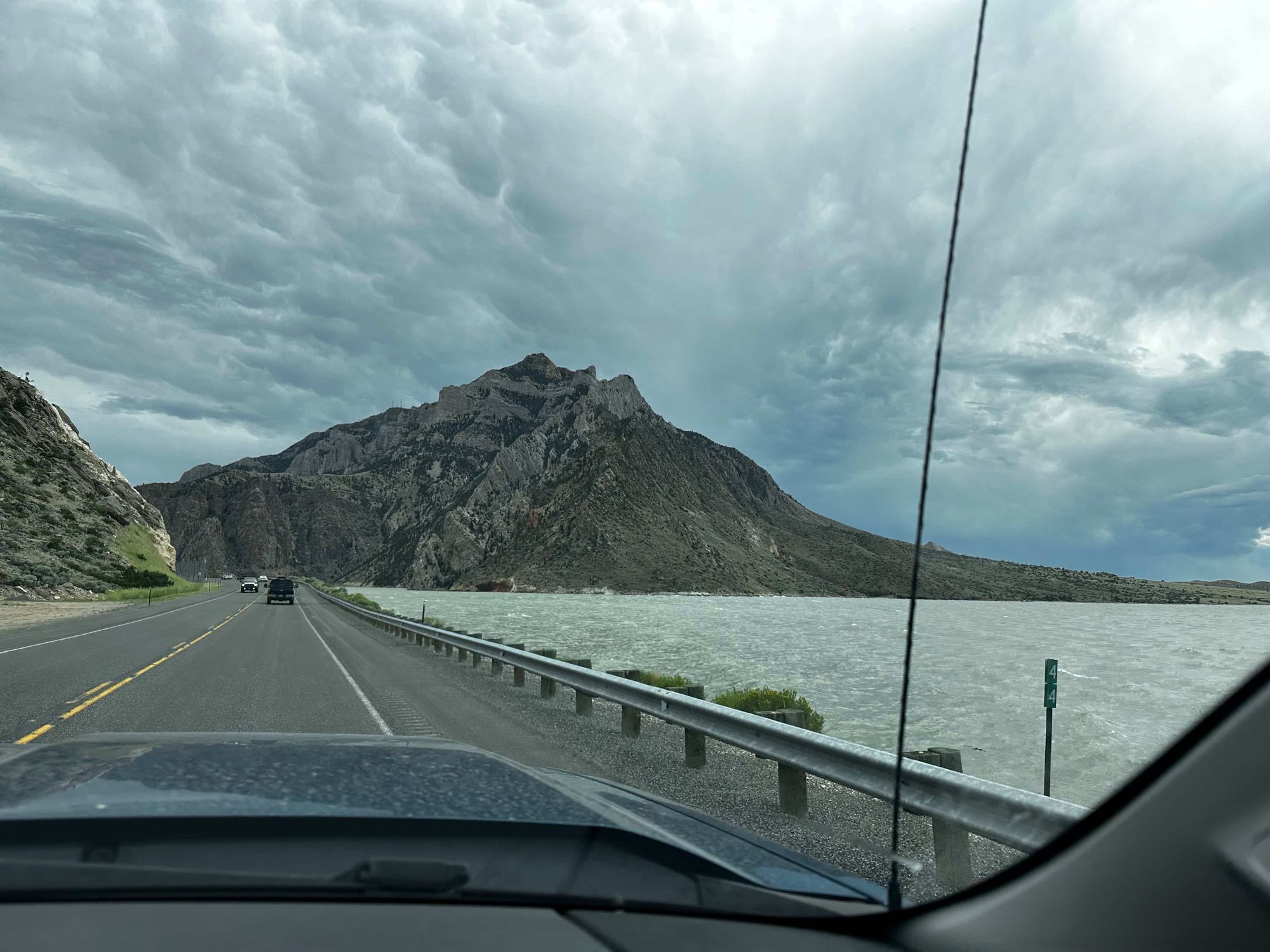
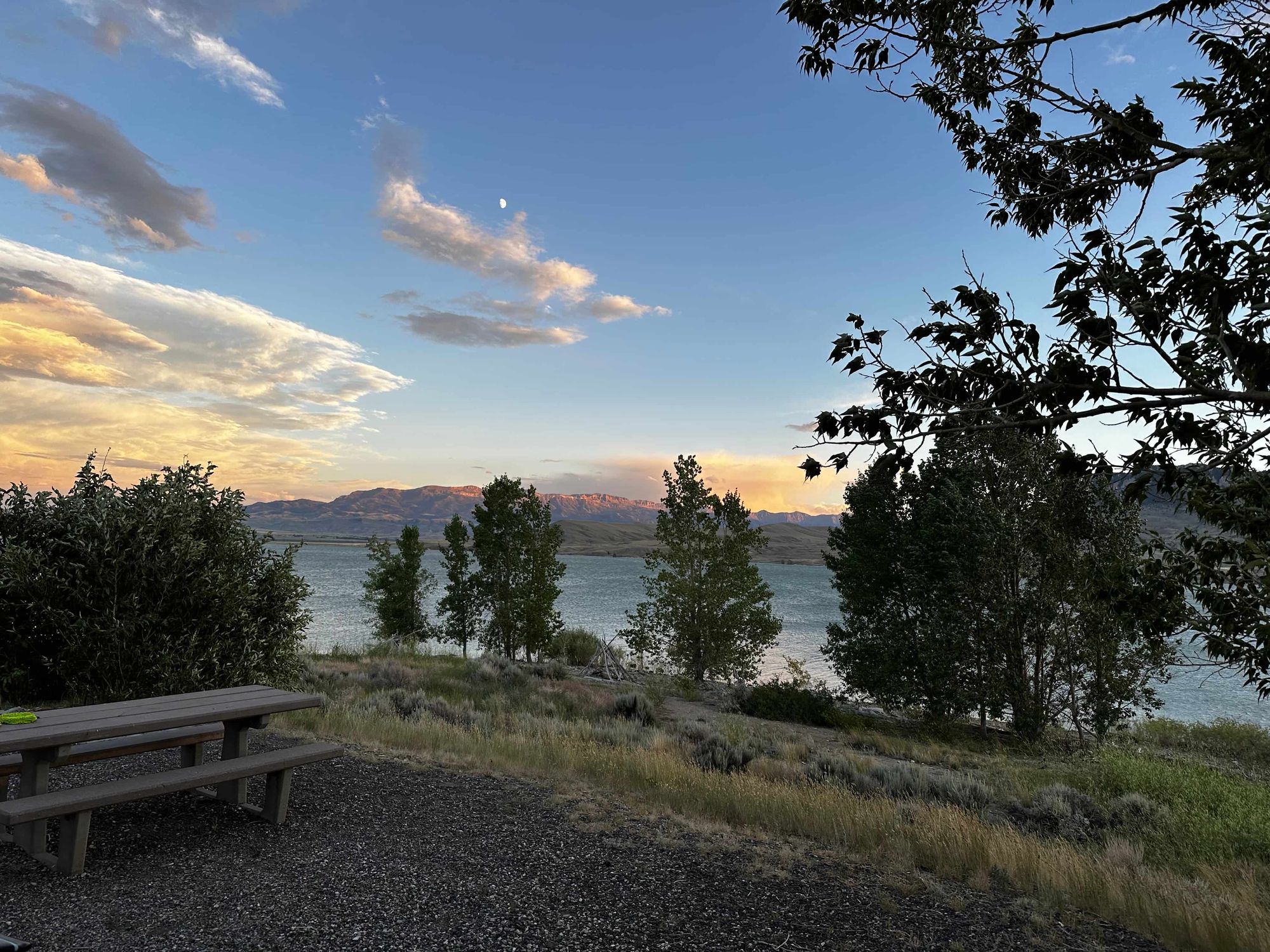
We were mostly catching up on work the rest of the week, but my #1 priority while we were in the area was to see a rodeo. So Friday night we walked around downtown, shopping a bit, and then went to the Cody Night Rodeo, which takes place every night at 8pm in the summer.
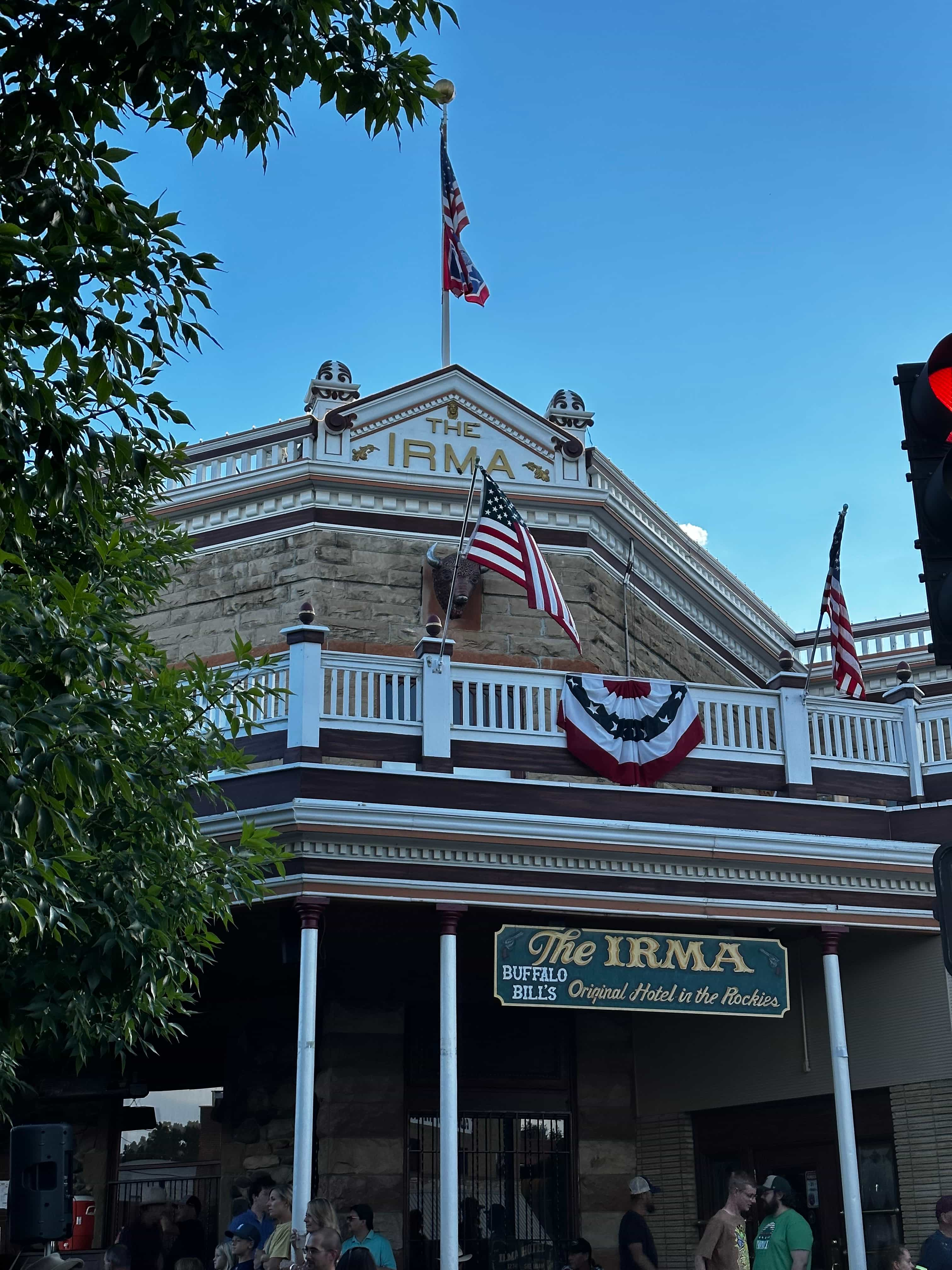
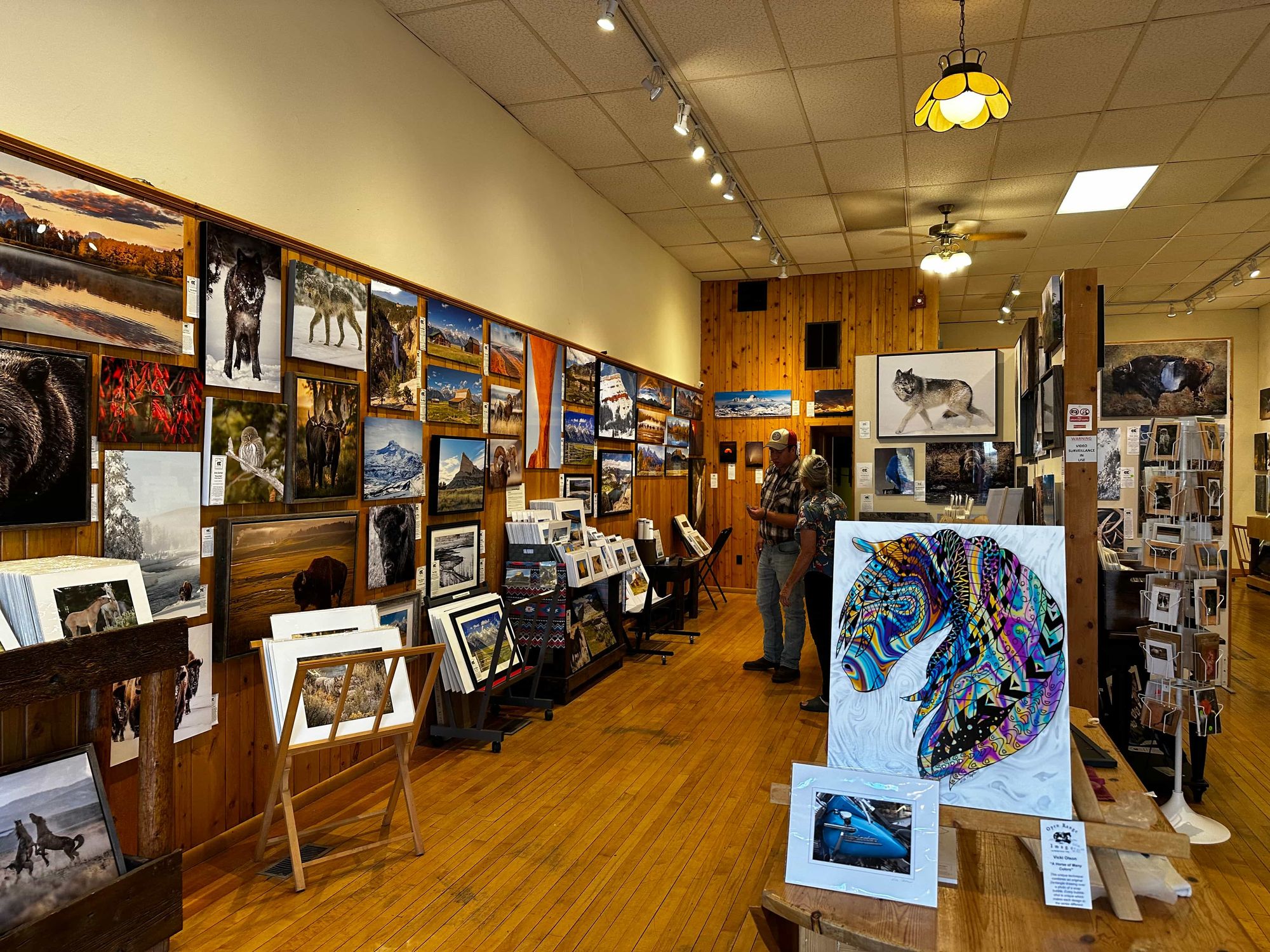
Downtown Cody
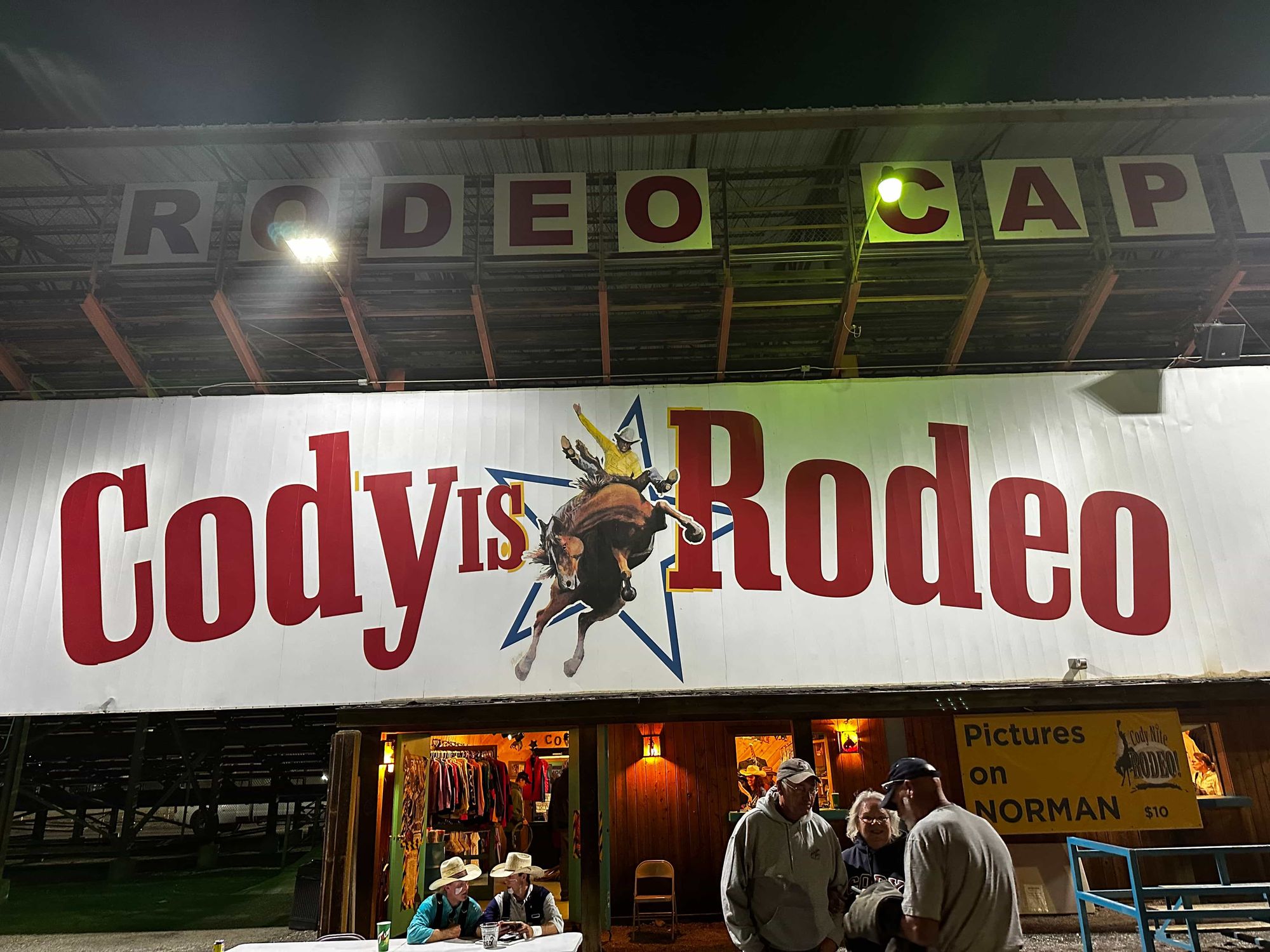
The rodeo was a lot of fun. They did a lot of different roping and barrel racing events, and had this crazy rodeo clown, who has been doing it for like 40 years. One time they brought all the little kids in the audience down into the arena, and he lined them all up and was goofing around prepping them for the event, having them stretch, asking them to roll around in the dirt, put a handful of dirt in their pocket, etc, with all of their parents in the audience groaning but laughing.
Anyway, their mission was to grab a bandana that was tied to a calf which they set loose in the arena. It was pretty fun watching a hundred kids chasing it around. Last but not least was the event everyone was waiting for: bull riding. Only one guy lasted longer than a few seconds.
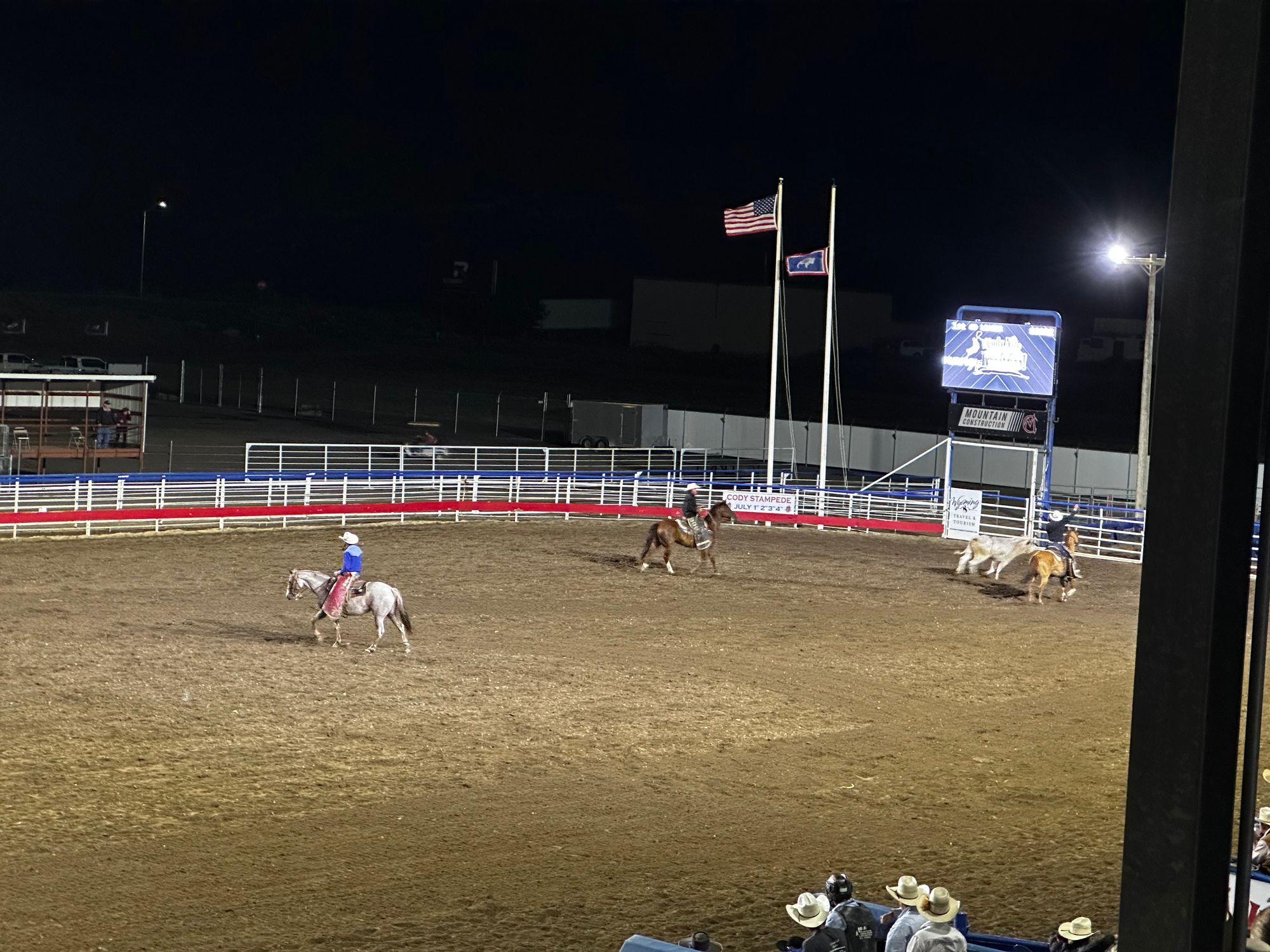
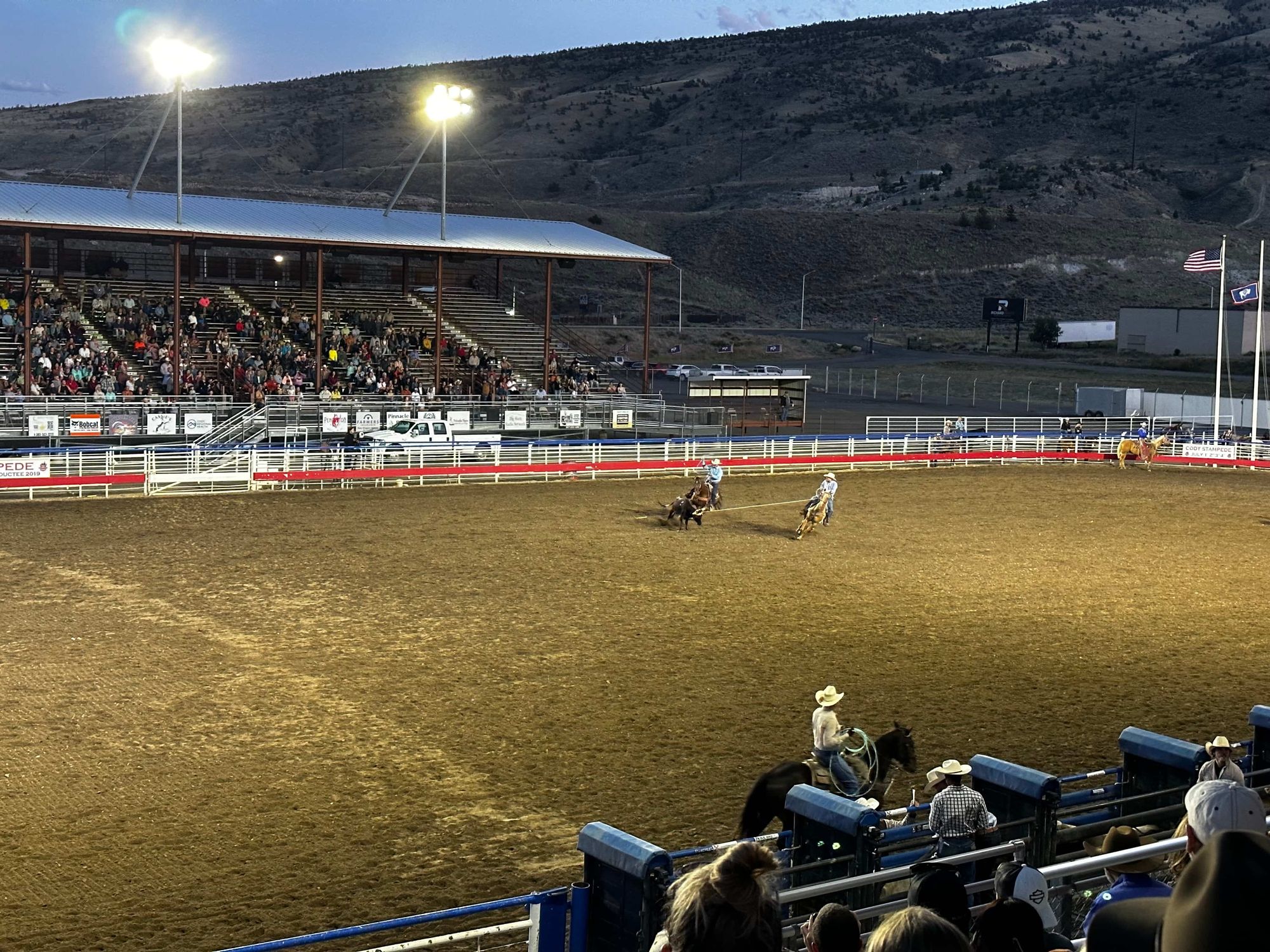
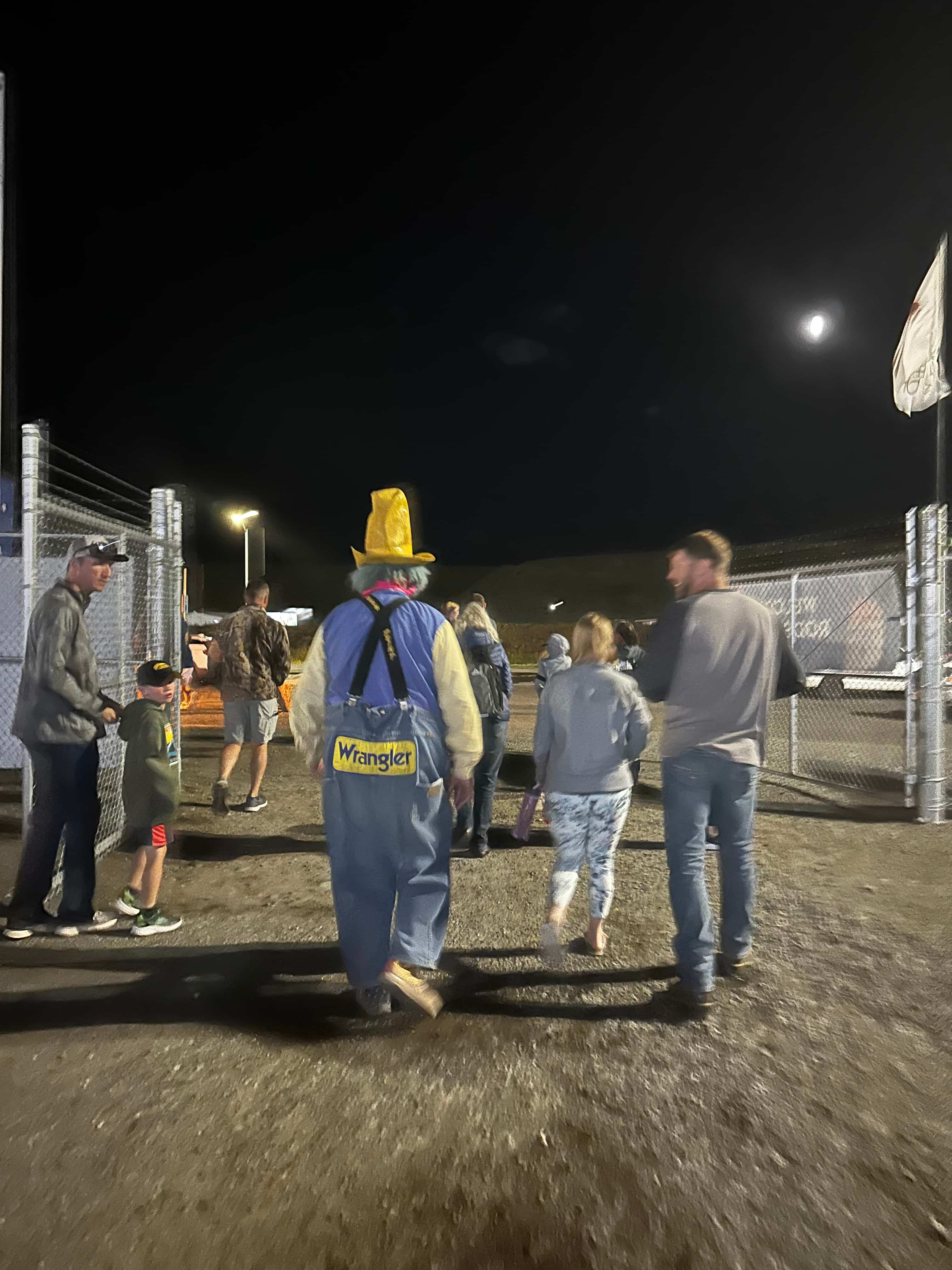
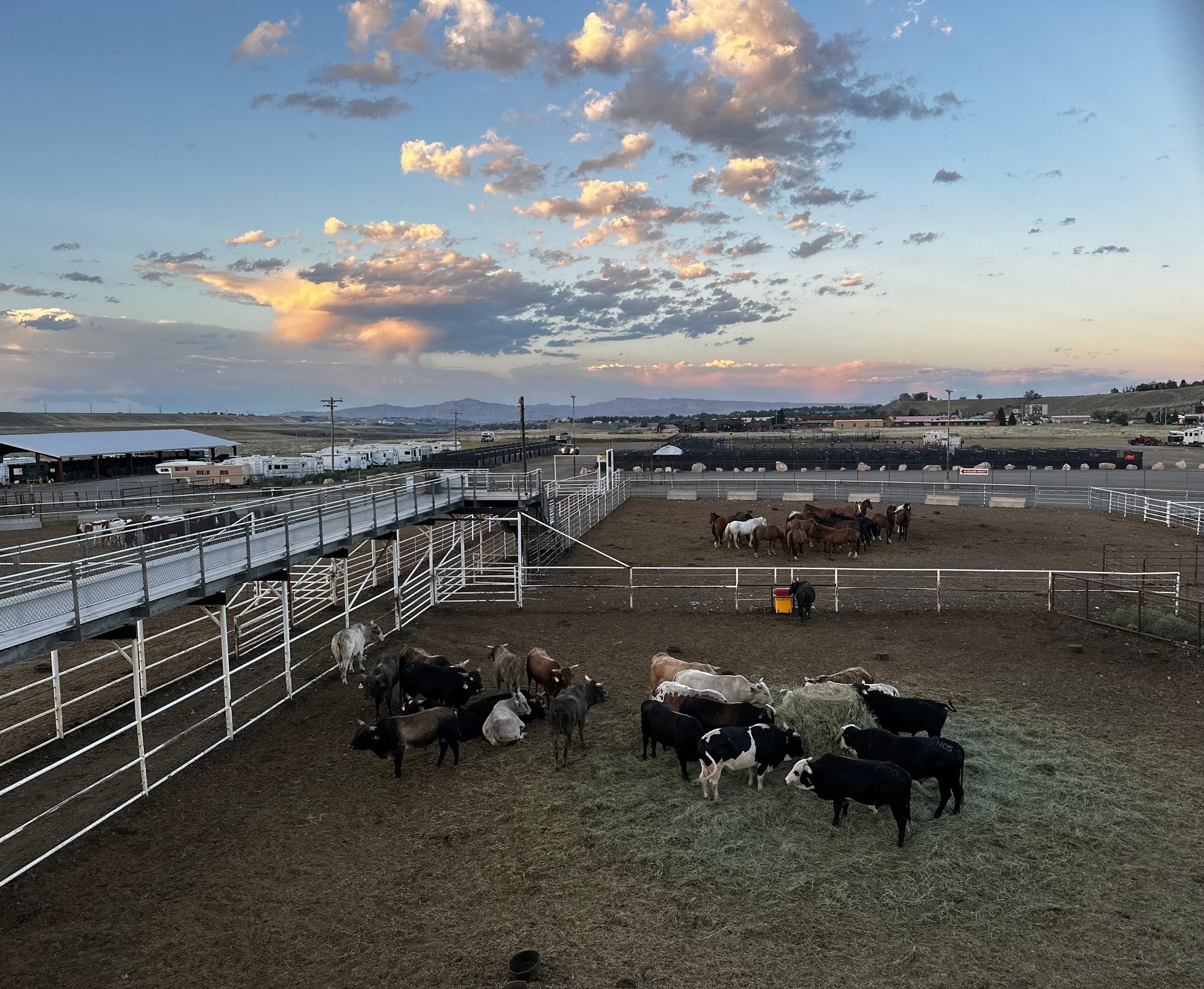
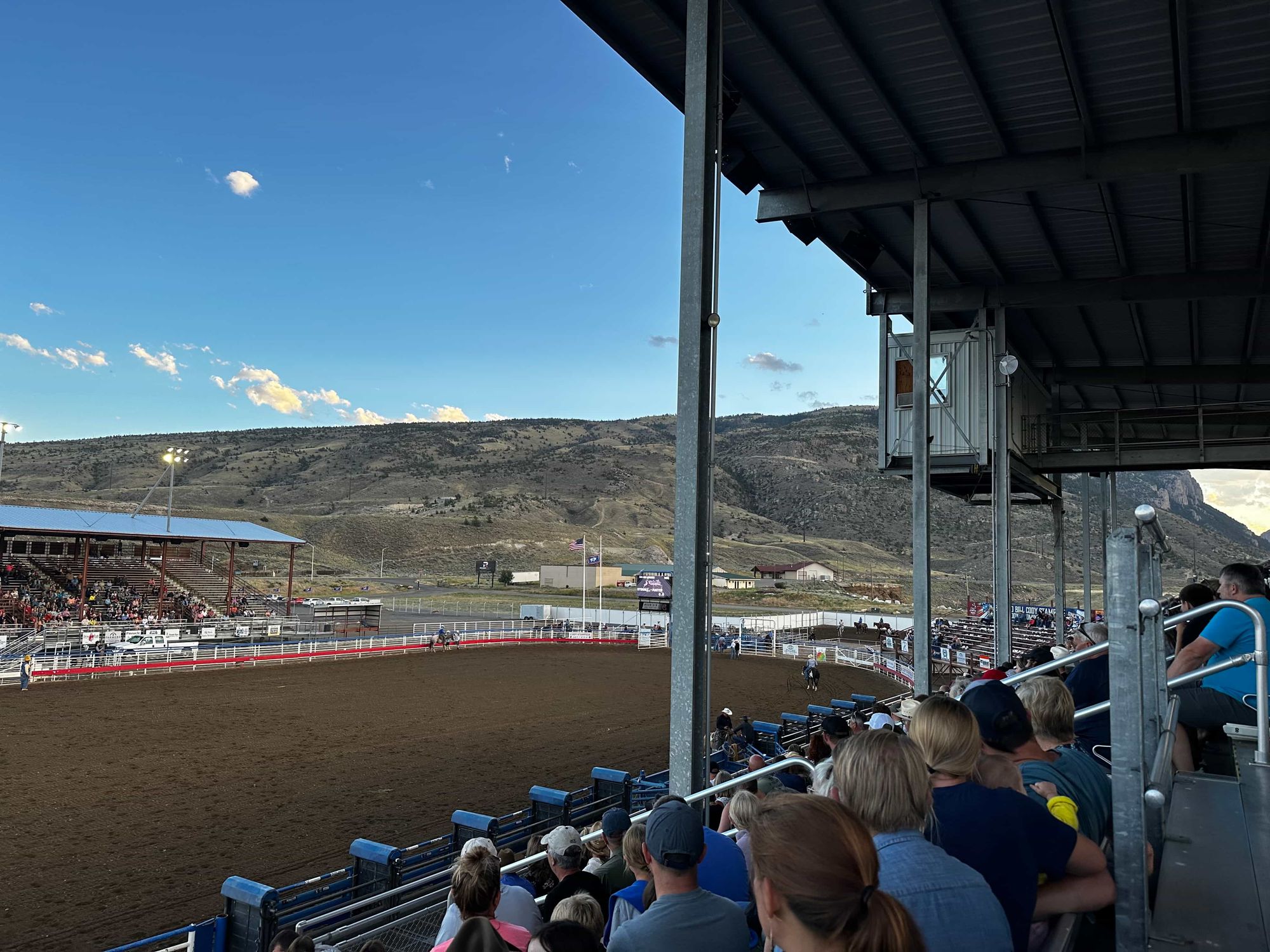
I never did rodeos or anything, but this made me also miss horseback riding, which I haven’t done since middle school! Maybe we should do a trail ride somewhere out here…
Before leaving Cody the next day, we went to the Buffalo Bill Dam visitor center so we could see the actual dam, which you can’t see from the road. It’s SO tall, 350 feet (it was the tallest dam in the world when it was built in 1910) and it’s an incredible view into the canyon from the top.
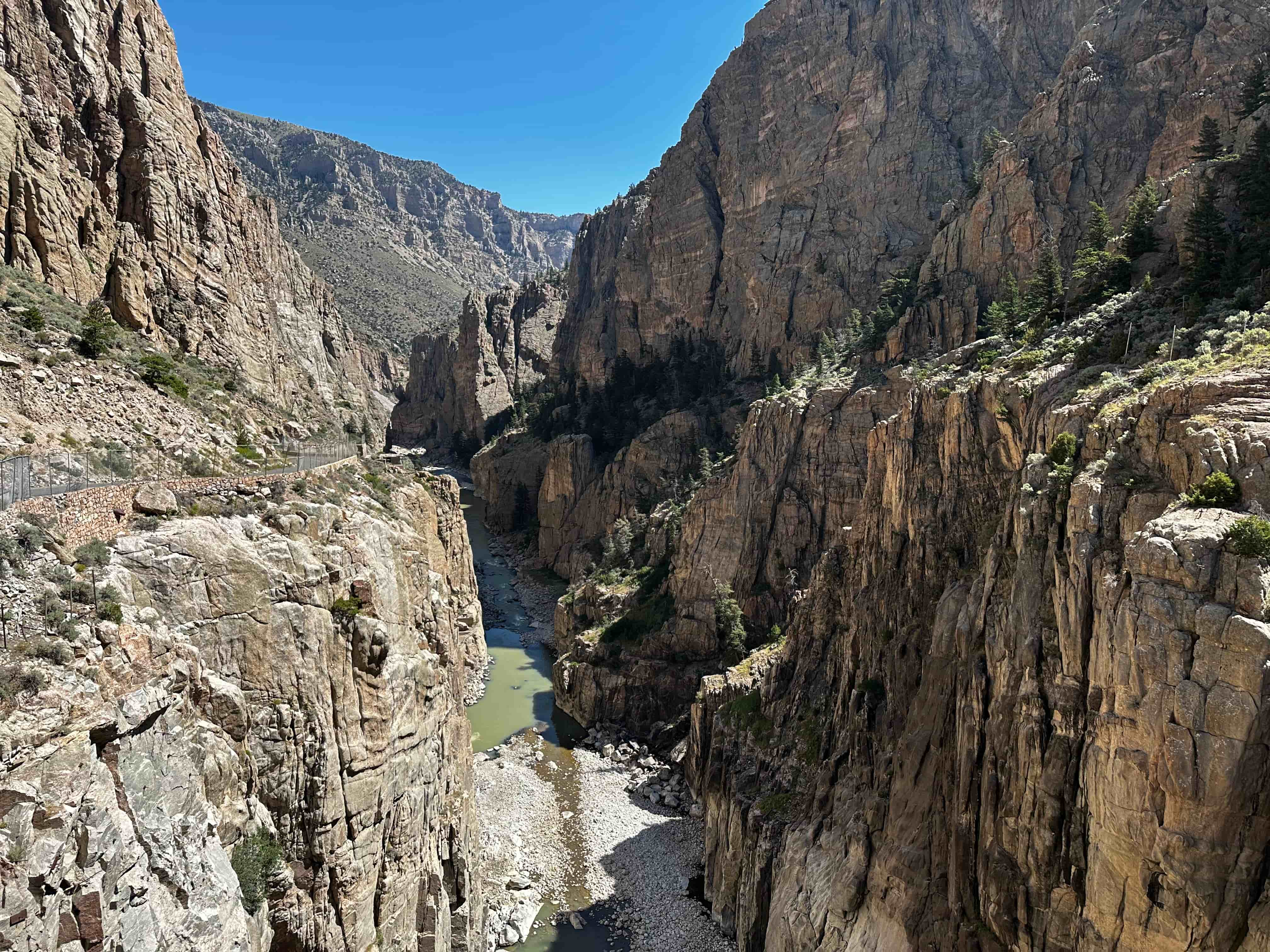
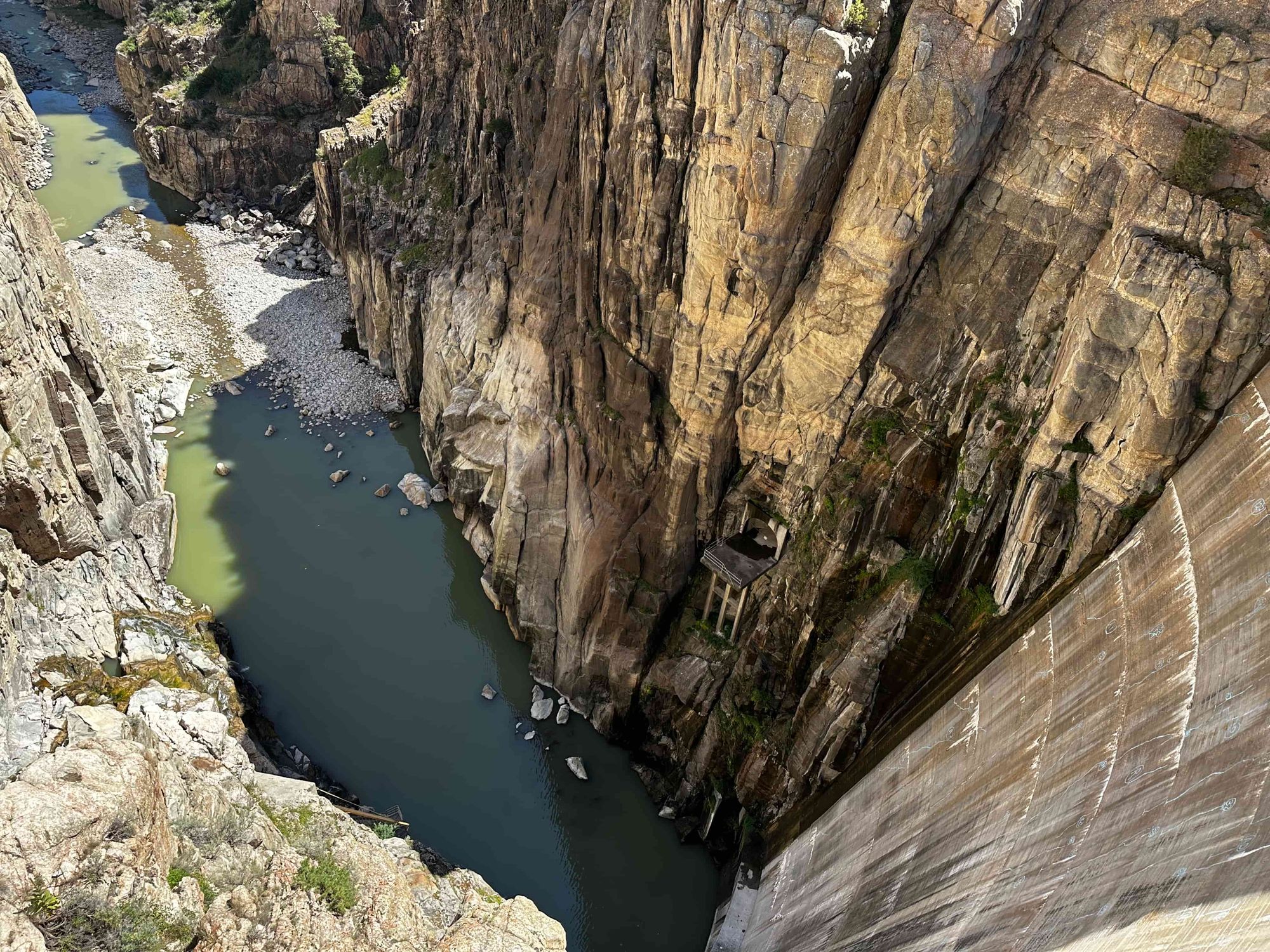
Dispersed Camping (Alpine, WY)
The next leg of our cross-Wyoming trip took us through Yellowstone and Grand Teton national parks on the drive down to Alpine – a small town about 45 minutes south of Jackson, right next to the Idaho border.
We’d decided to start south and work our way north through the parks. This was mostly because we wanted a bit more time to plan for Yellowstone camping, and we thought maybe Yellowstone would be slightly less busy in mid-August vs July (probably not a noticeable difference, but who knew). And we were super excited to see the Tetons — I think I was more excited about them than Yellowstone.
Since our campground reservation in Grand Teton didn’t start til Tuesday (limited availability and last minute booking on our part) we decided to take advantage of the many dispersed camping options Wyoming has to offer for a few nights. A lot of good-looking ones were around Alpine.
The drive from Cody to Alpine on Saturday was spectacular the whole way through. Even before we got into Yellowstone, it was an ultra-scenic road following the Shoshone River and carving through red-rock mountainsides. Finally, we got into the park itself! It was around noon and the east entrance wasn’t busy at all — we were surprised, after hearing all about Yellowstone peak summer traffic. (That’s because the busiest part of the park is on the west side though, as we would find out later).
We followed the east entrance road through the mountains, which were covered in burned pine trees, around the north side of Yellowstone Lake, and down to the south entrance. The lake was huge, blue, and beautiful. The drive through the park took over two hours (it takes FOREVER to drive anywhere in Yellowstone) but it was easy except for some construction, and scenic the whole time. We went from being high on a mountain overlooking the lake, to driving on a narrow road through the pine forests by the water. We even started seeing some evidence of the Yellowstone supervolcano once we got to the west side of the lake… there was a warning sign near the shore that said “UNSTABLE GROUND. BOILING WATER.”
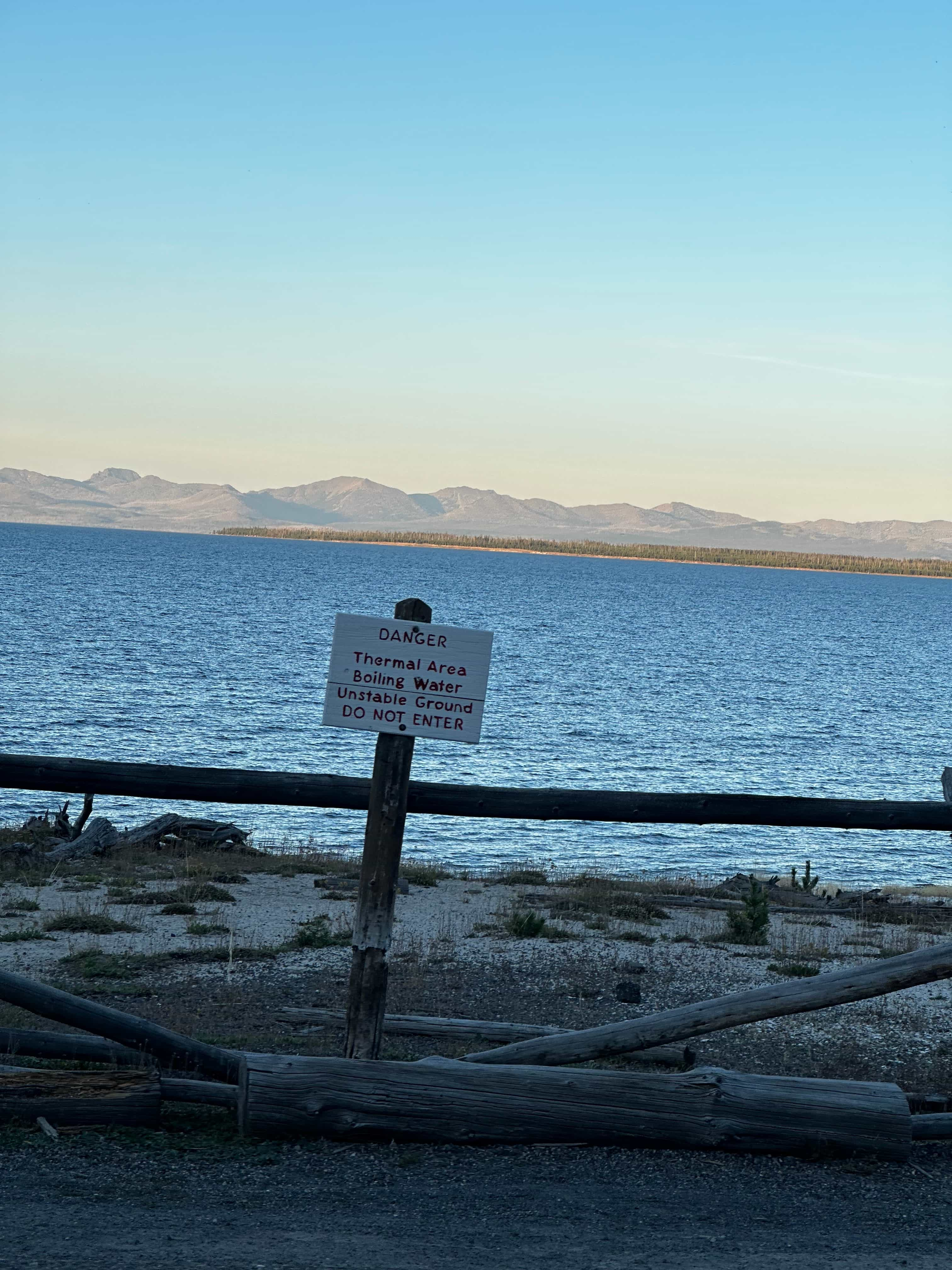
Once we got through the south entrance, it was only a short drive before we started seeing the huge, jagged, incredible Tetons, rising up suddenly from the flat land around them.
Highway 191/89 follows the mountains all the way from the south Yellowstone entrance to Jackson, which is south of Grand Teton. (Random fact, Jackson Hole is the name of the whole valley/area, not the town!) So we got amazing Teton views for a long time on the drive, passing several overlooks that we’d go back to later. The look of the mountain range changes as you drive by and see the peaks from different angles — Mount Moran and Grand Teton were the only two we knew the names of by sight.
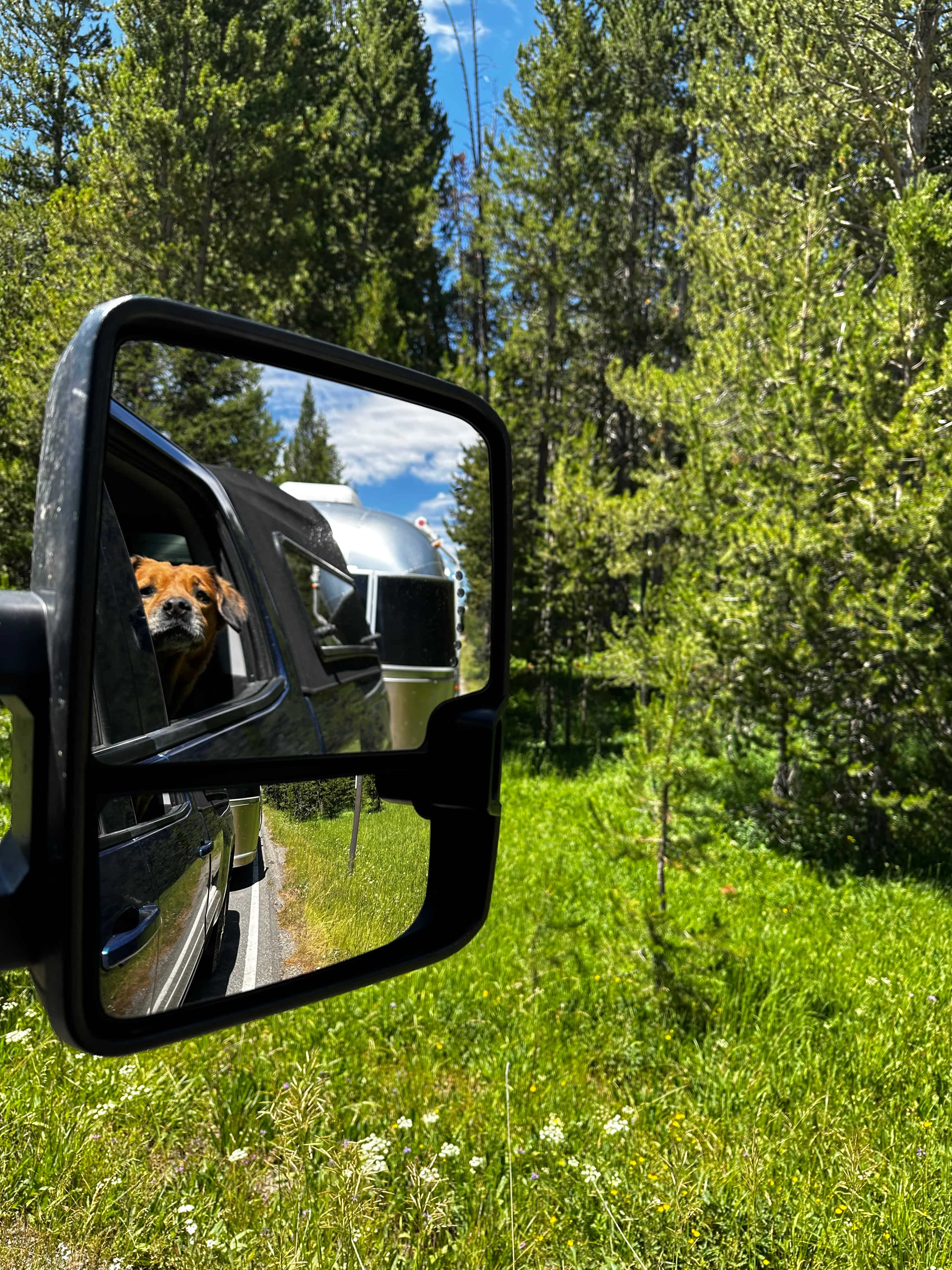
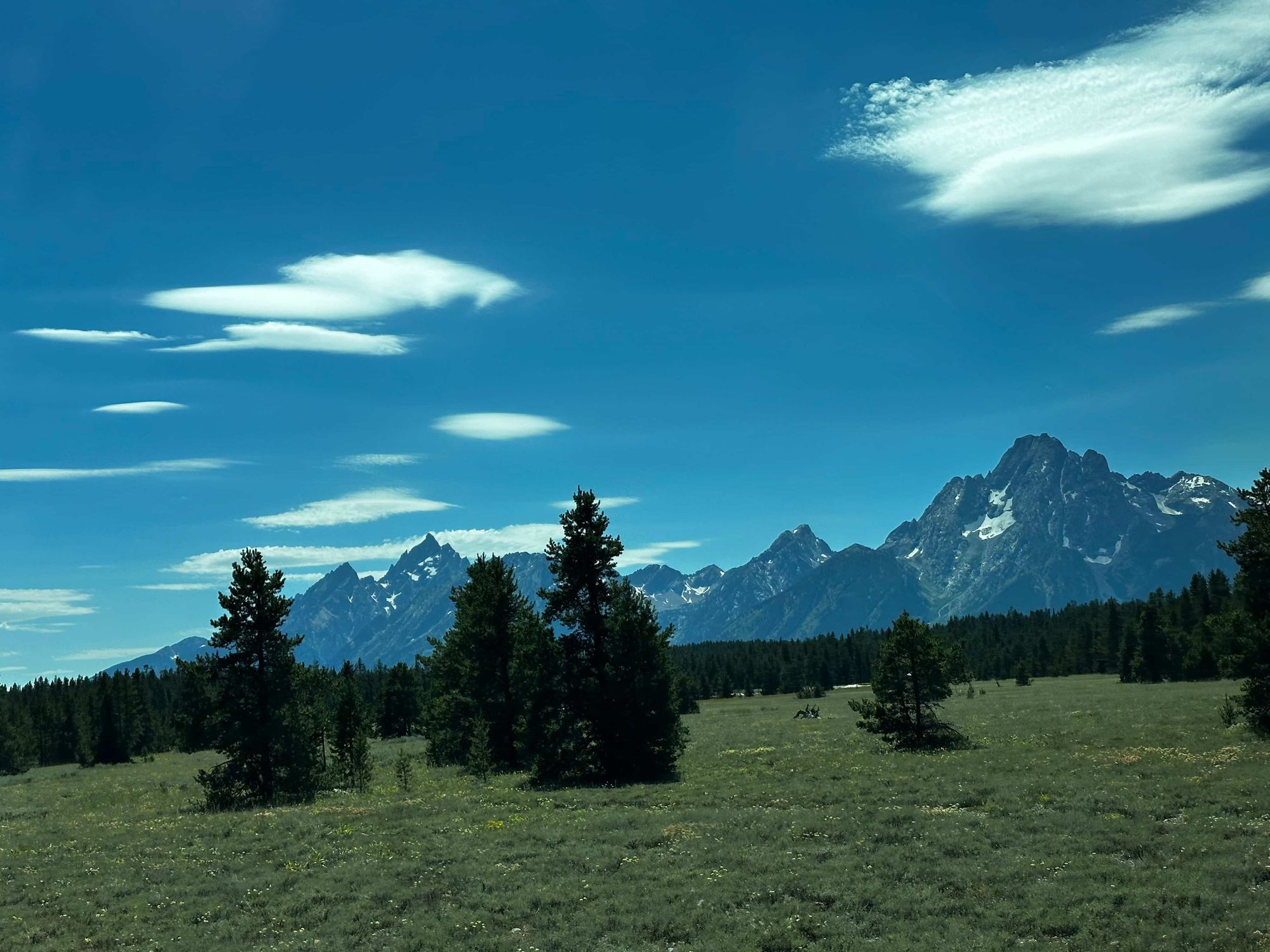
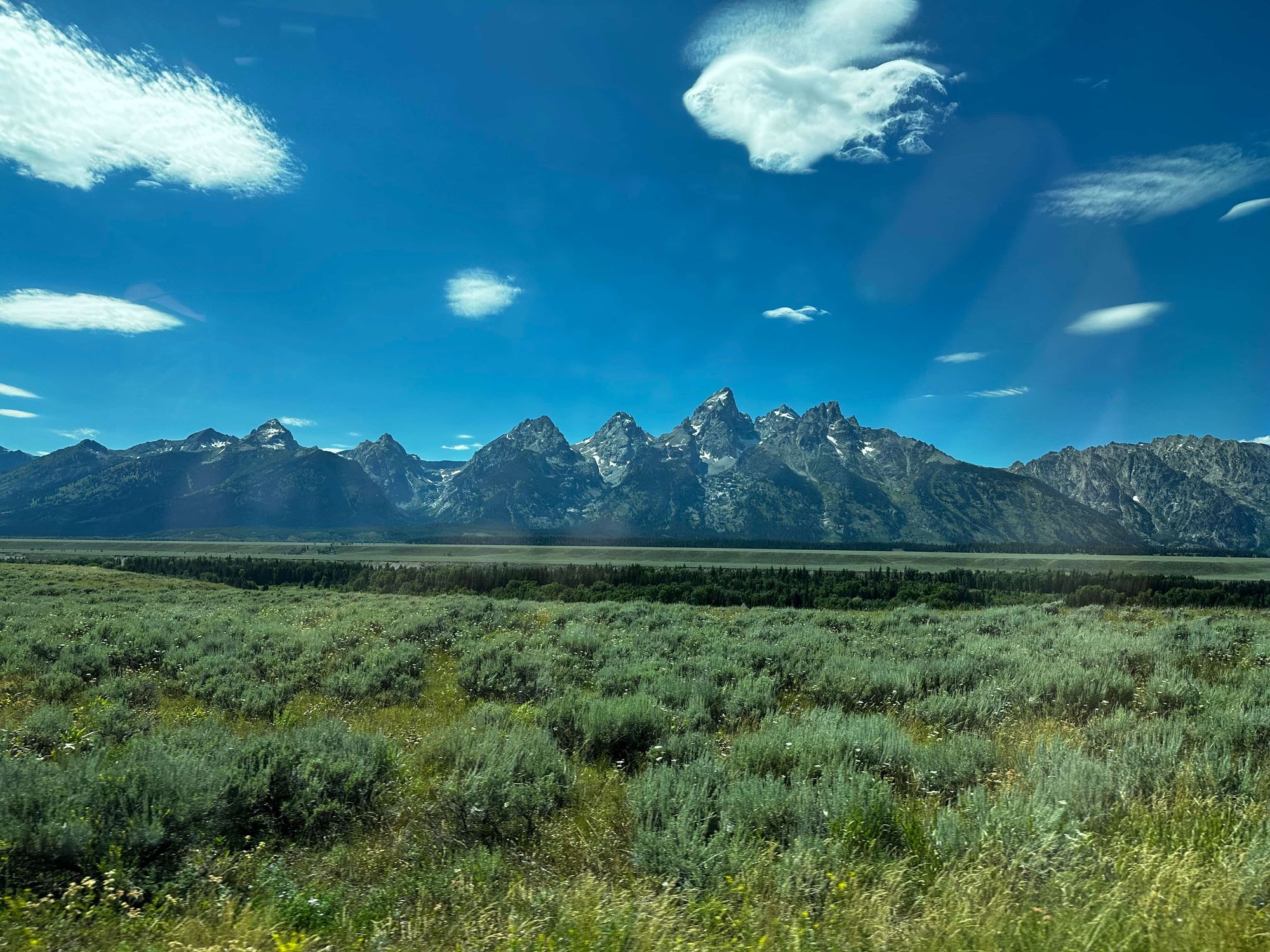
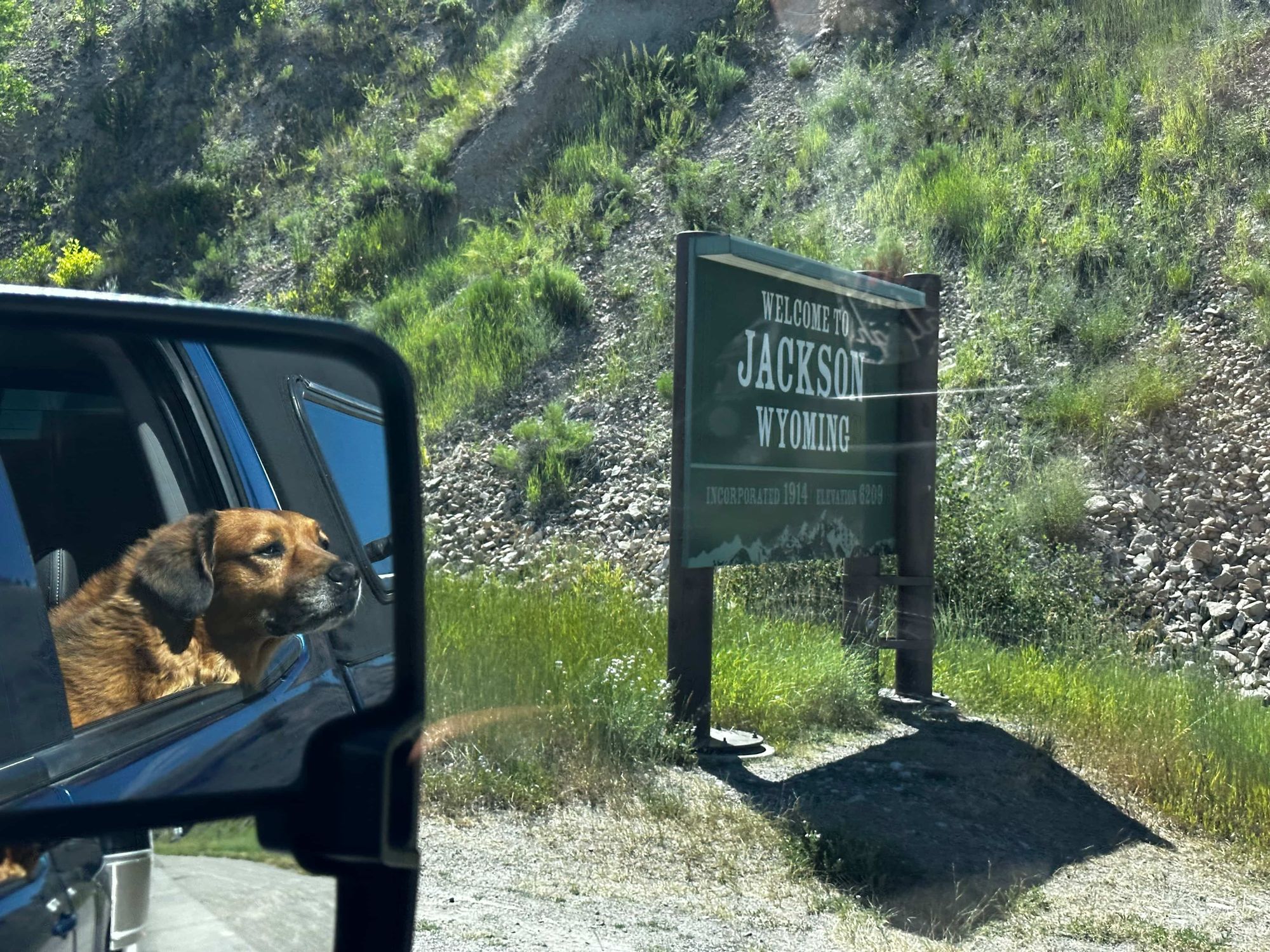
We said goodbye to the Tetons for now, drove through Jackson, and then kept following the highway south through more beautiful views, this time in Bridger-Teton National Forest along the Snake River. The mountains on each side of the road were blanketed in pines, and we saw people whitewater rafting on the river below. All of Wyoming is so scenic, and the areas outside the big national parks are just as pretty.
Finally, we got down to the small town Alpine. The next few days were spent just hanging out, working, and hopping to a different dispersed campsite every night.
The first site was Palisades Reservoir South, a big open area along the reservoir, which is part of the Snake River. Several campers were parked along the dirt road, either in a grassy field or down closer to the water, but there were still lots of space. We found a nice area in the grass set apart from the others. It was hot, no shade, but great for our solar panels. It was busy, probably popular with locals — everyone was riding ATVs and dirt bikes around there all day.
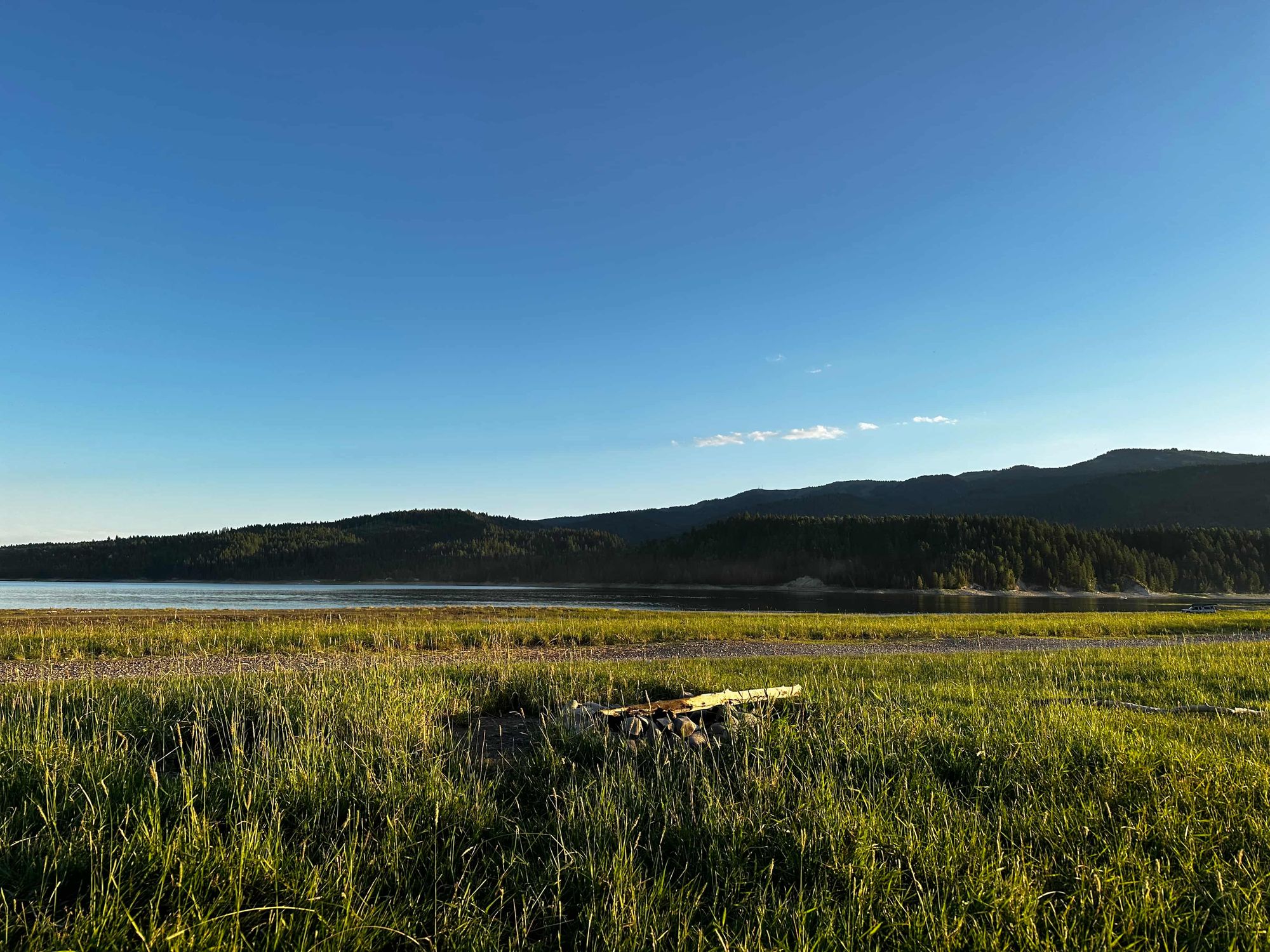
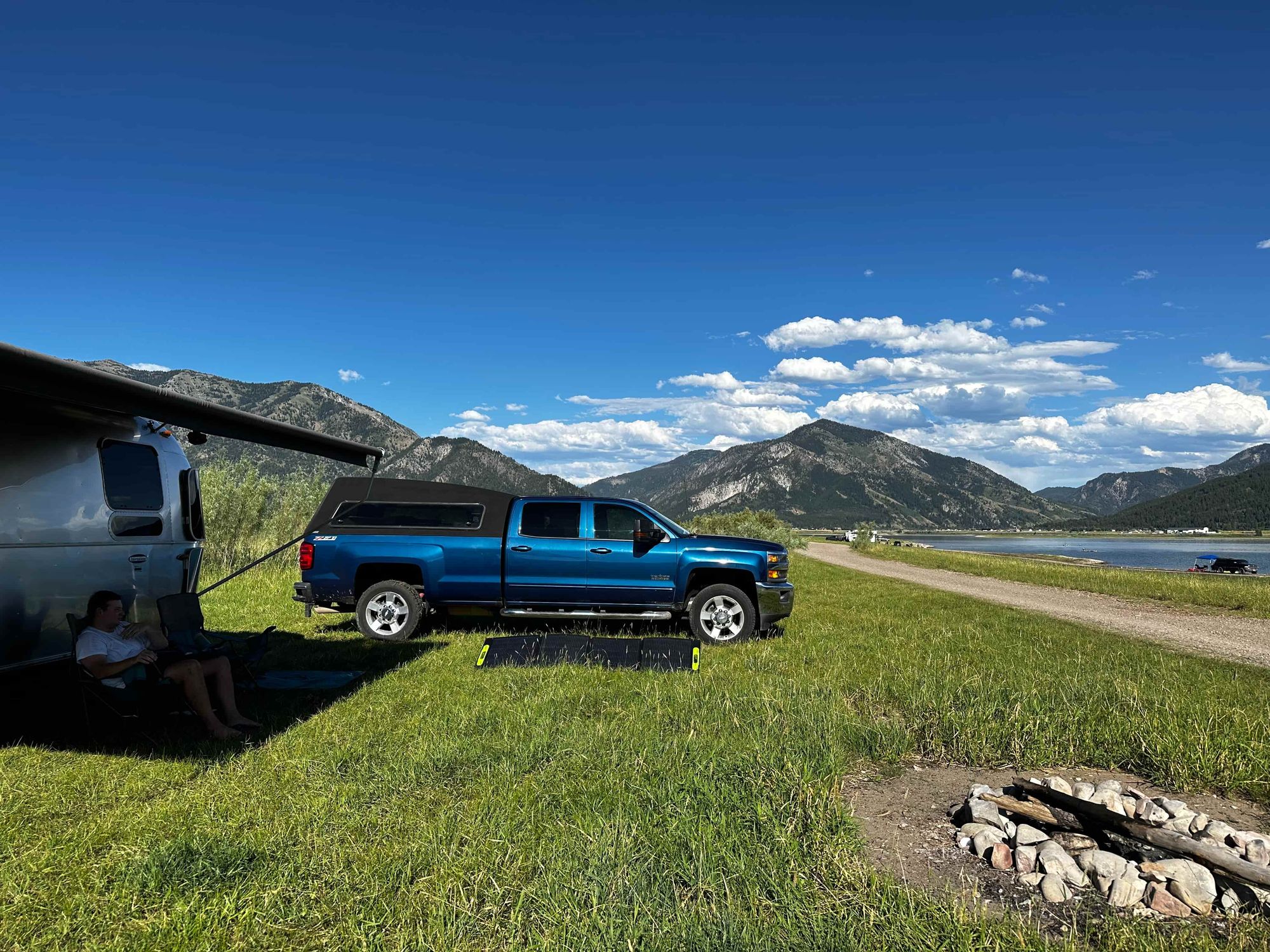
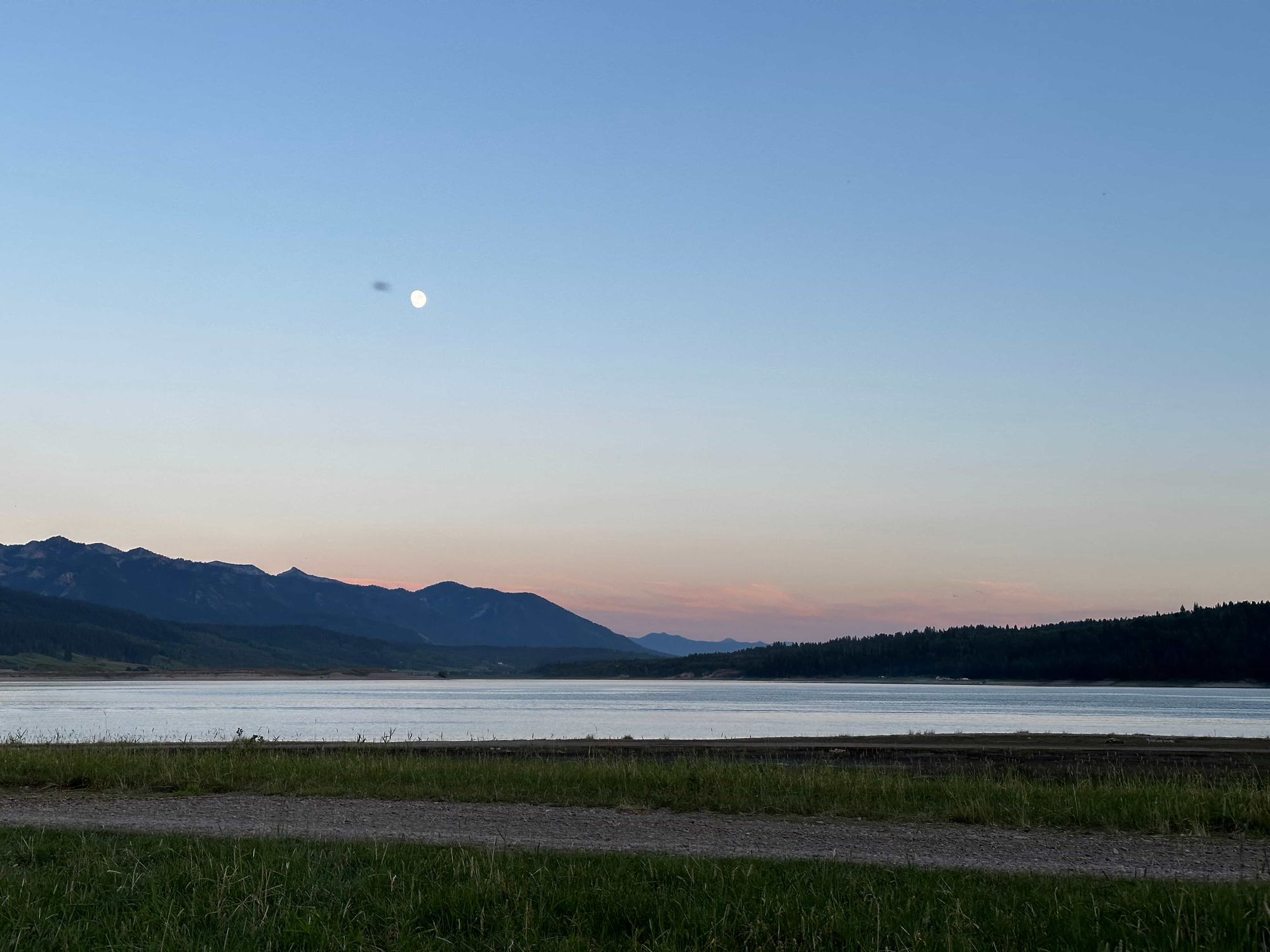
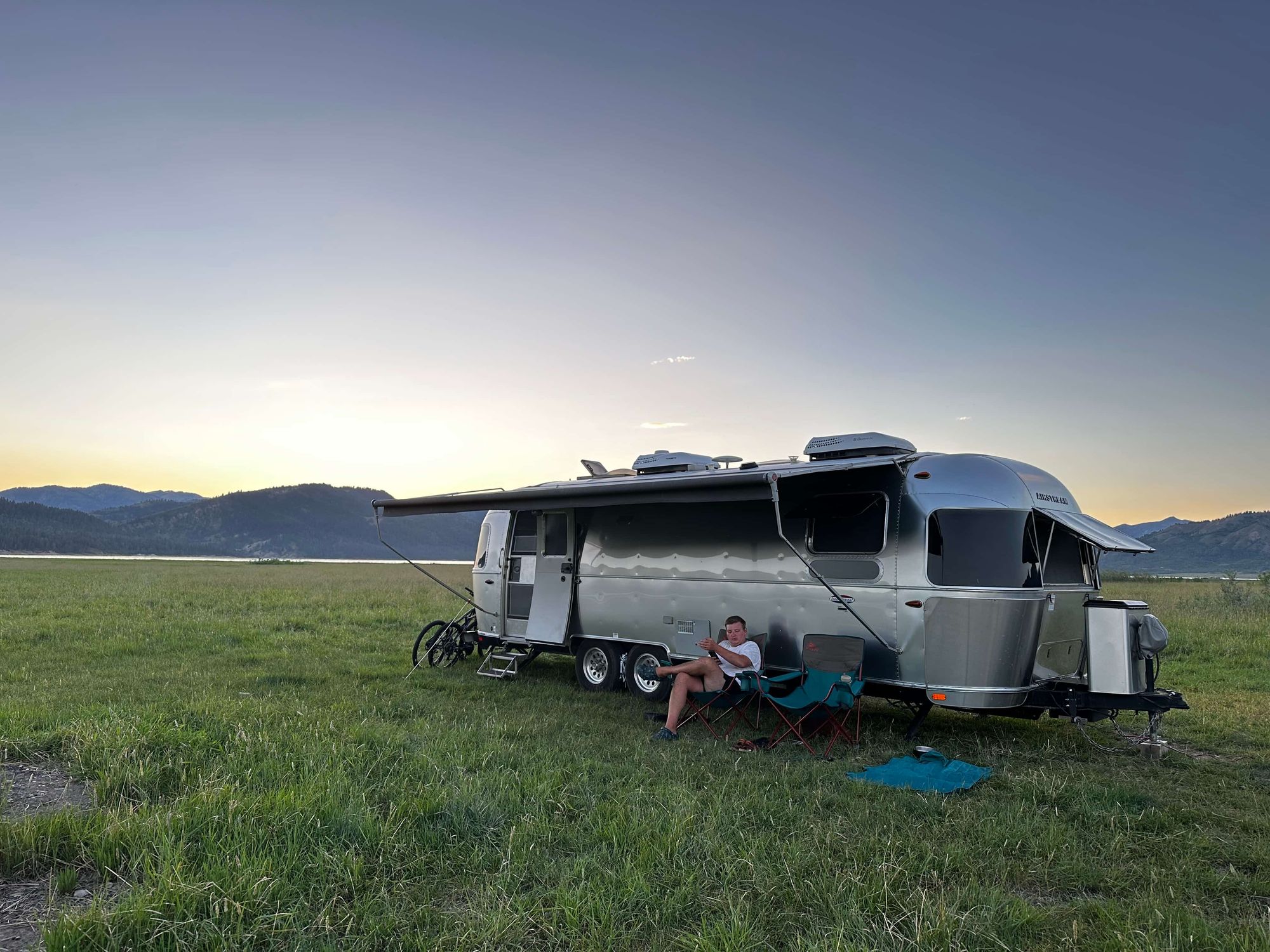
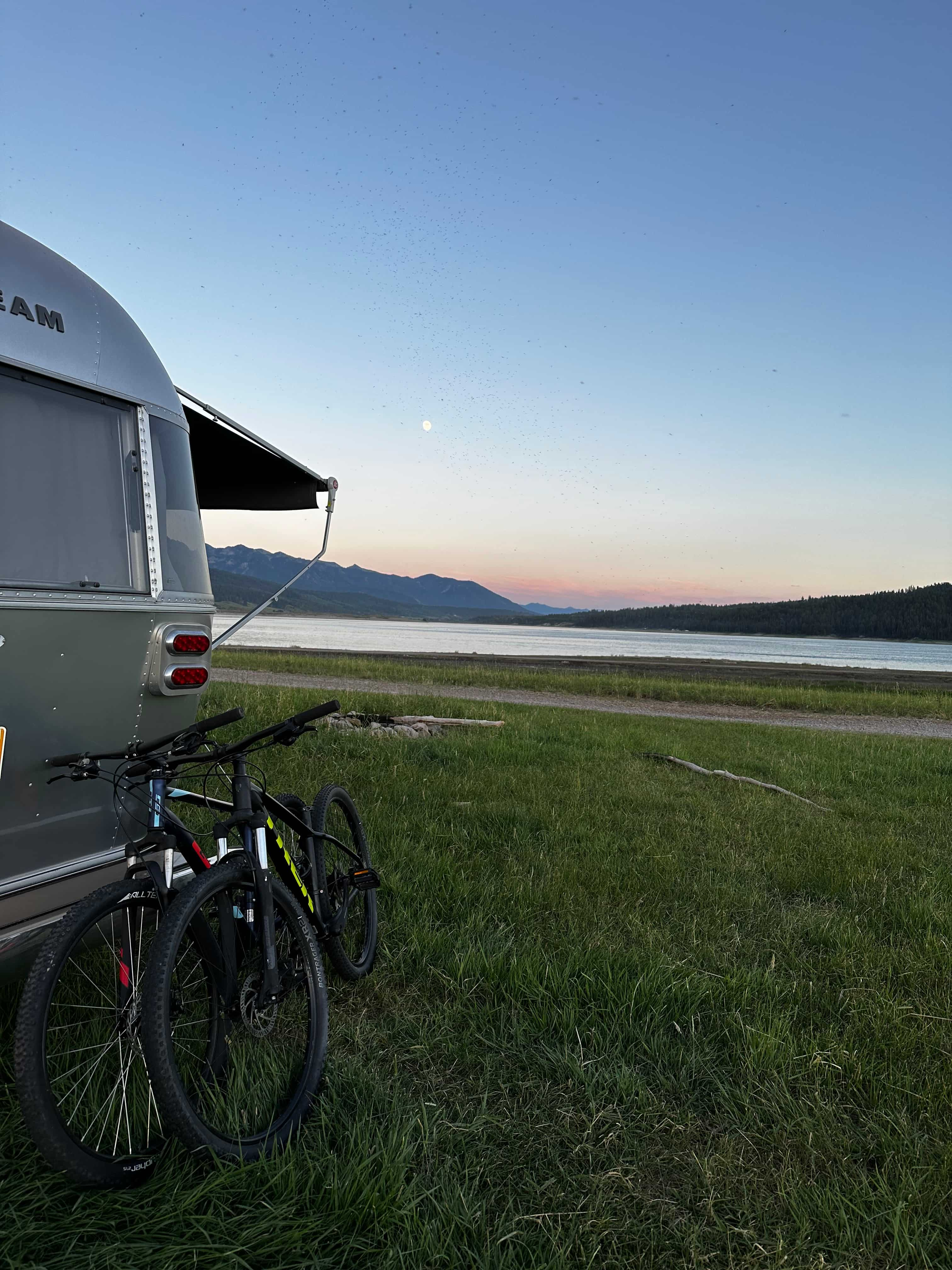
We booked a Harvest Hosts stay at Melvin Brewing in town the next day. It didn’t end up being the best — the brewery was absolutely packed and we were told to park pretty much wherever we could find a spot (there was already some land for dispersed camping around the brewery, but it was tight). We found a spot behind the building, kind of along the road and parked next to a semi-truck. It was fine for the night, at least we got good beer from the brewery.
The next day was our favorite spot — Below the Dam camping area, across the border in Idaho. It was a big, rocky field along the river, and super peaceful, with only two other campers there. It stormed in the evening, but stopped in time for one of the prettiest sunsets we've ever seen, complete with a rainbow. If we’re in the area again, we’ll probably stay here the whole time.




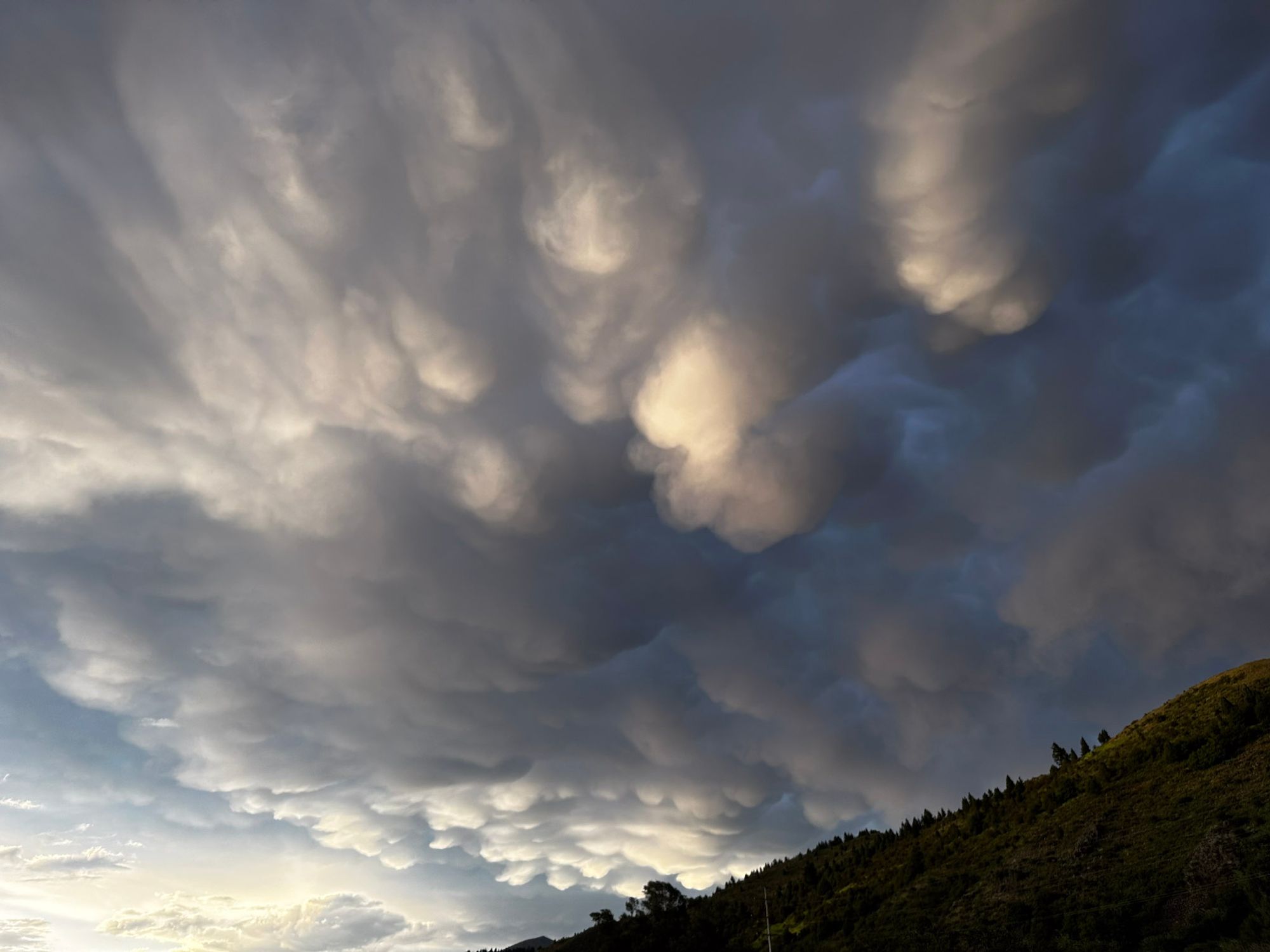
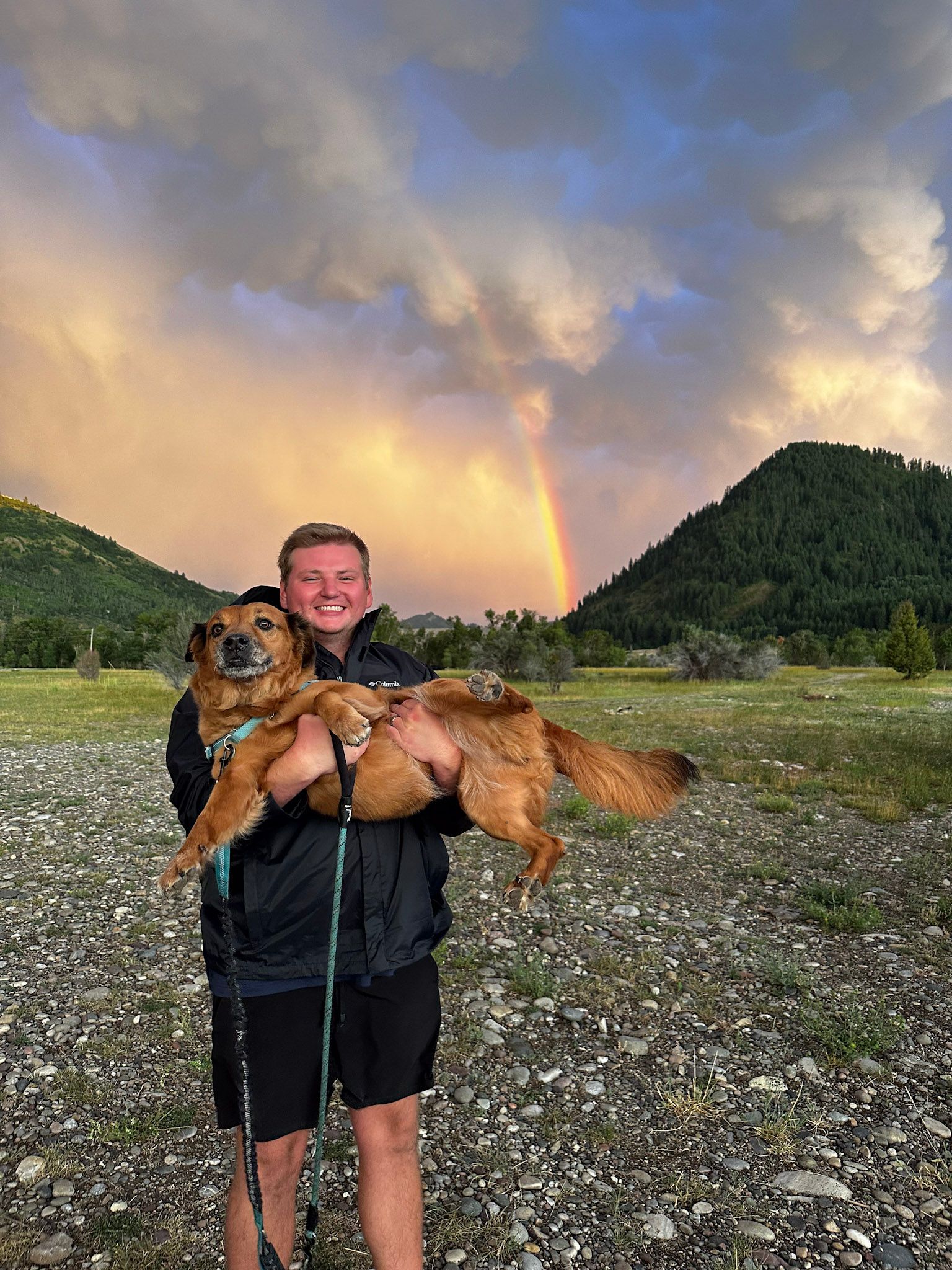
And that’s pretty much it for our first full week in Wyoming! Part 2 will be all about our two weeks in Grand Teton — I am SO excited to share photos and talk about it. Grand Teton and Yellowstone are probably my favorite parts of this adventure (so far!) Bye til next time. 🤠
Member discussion